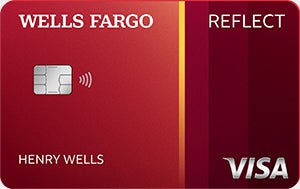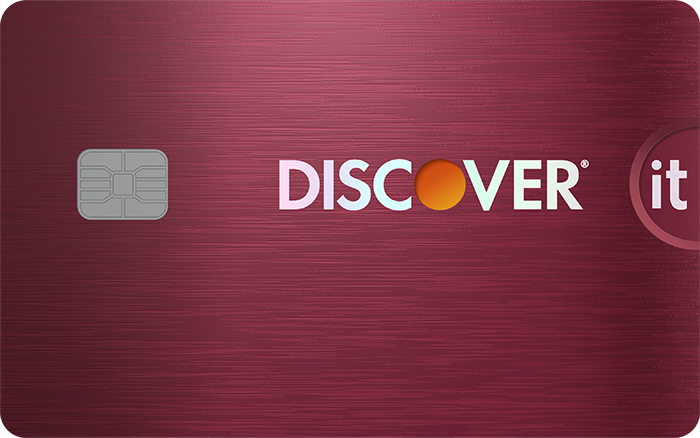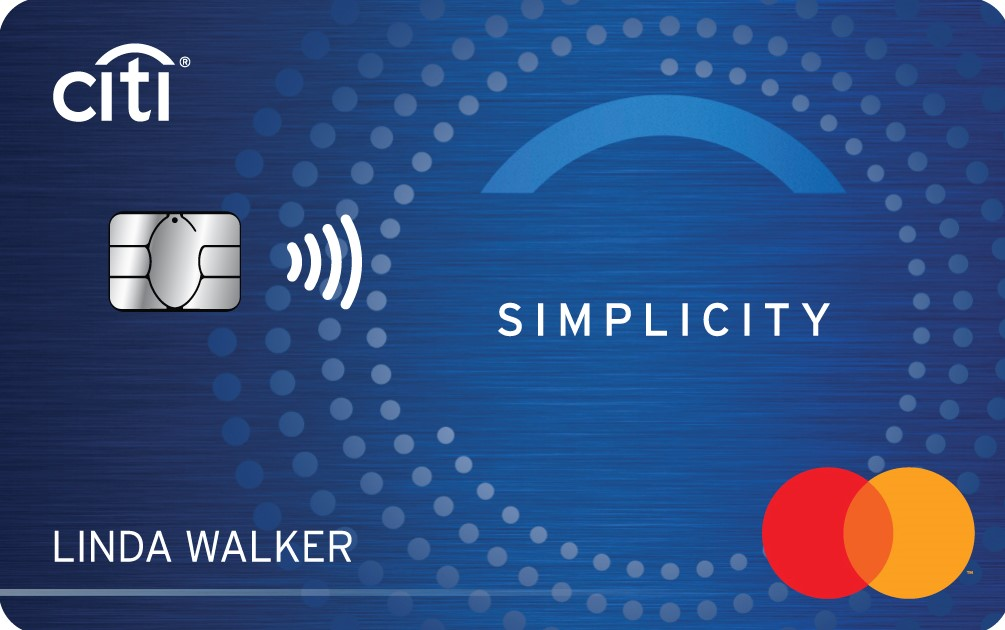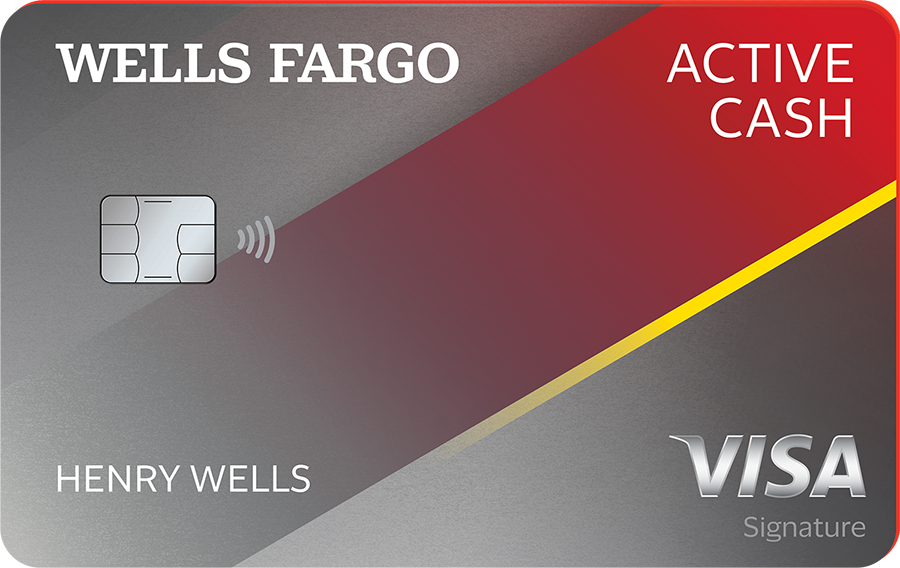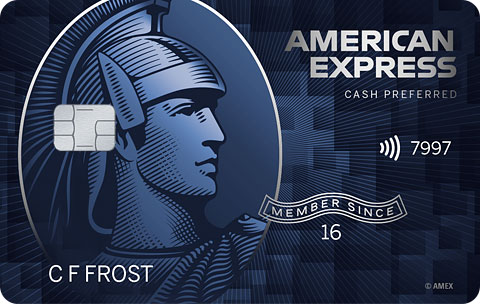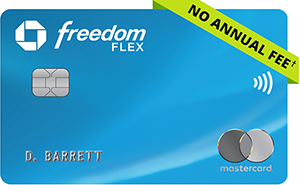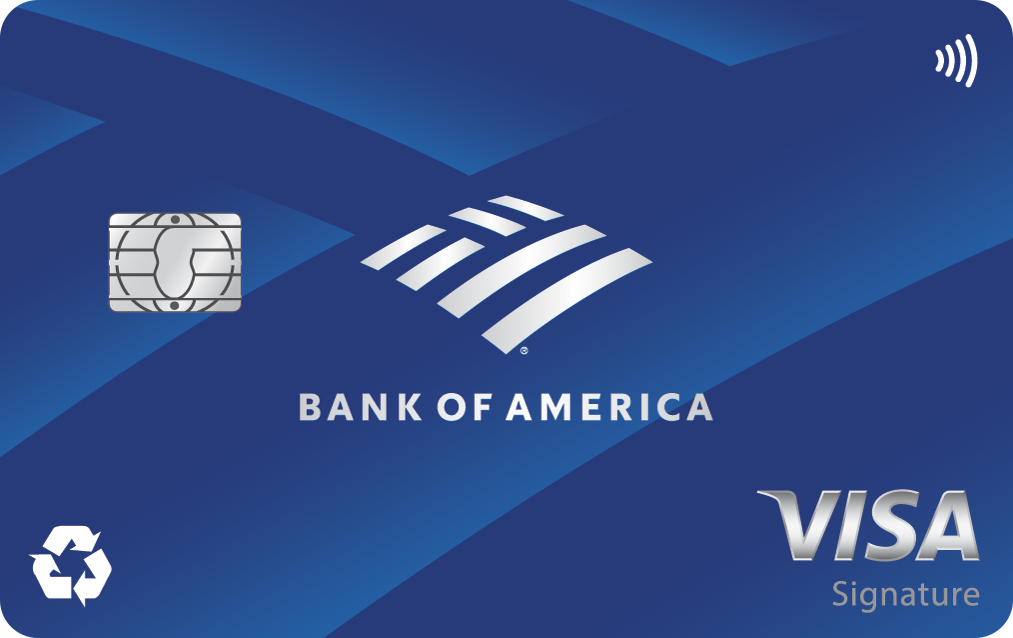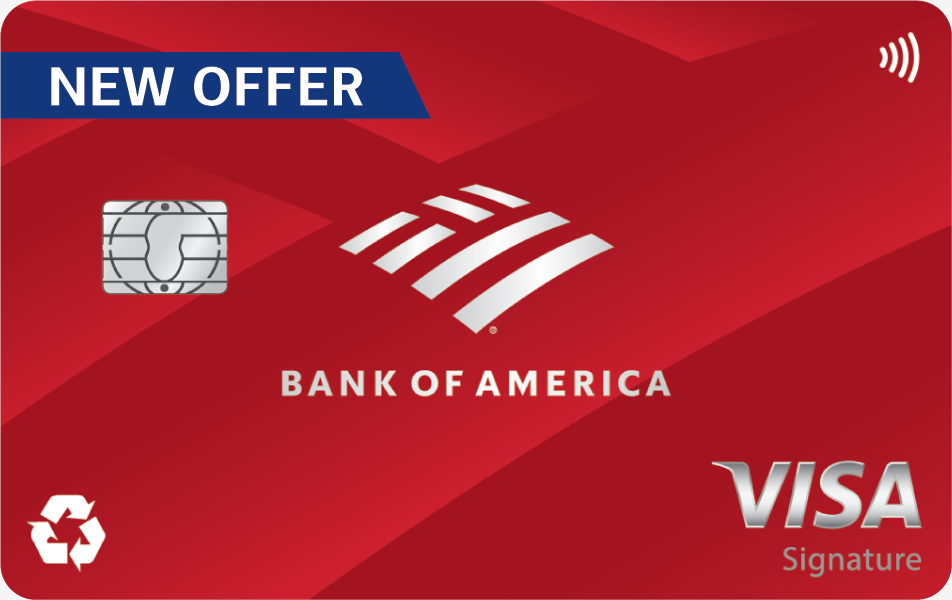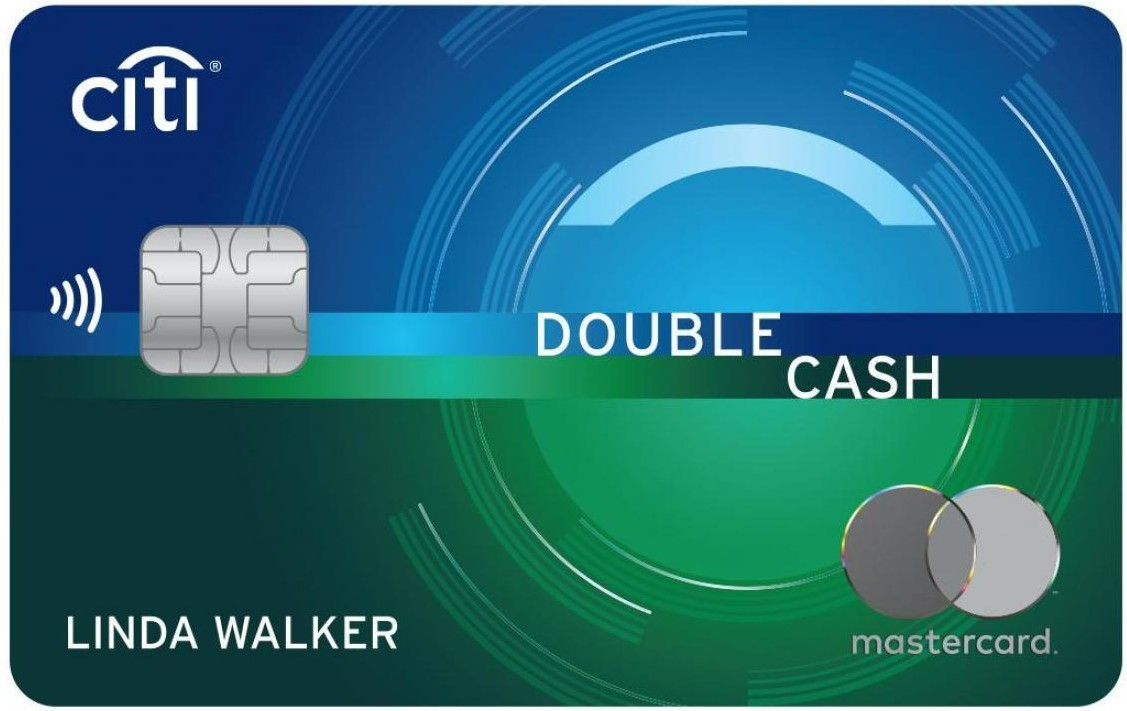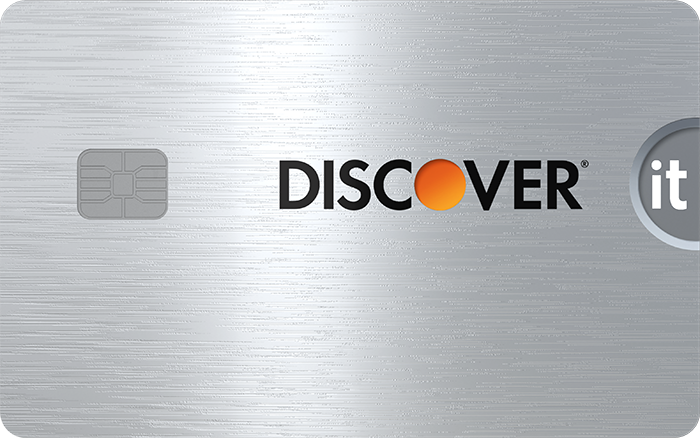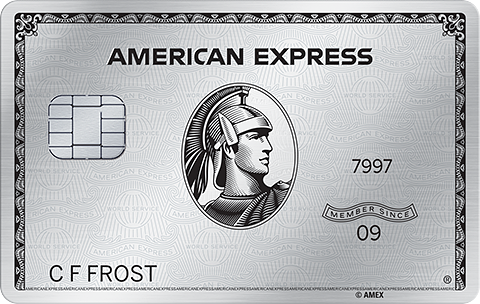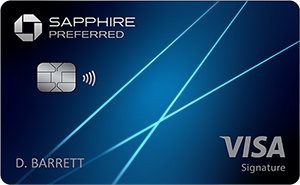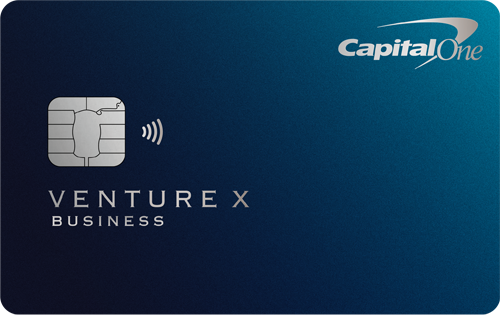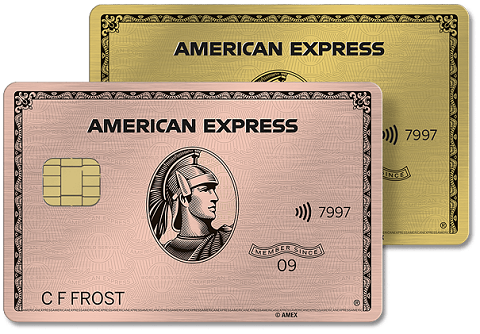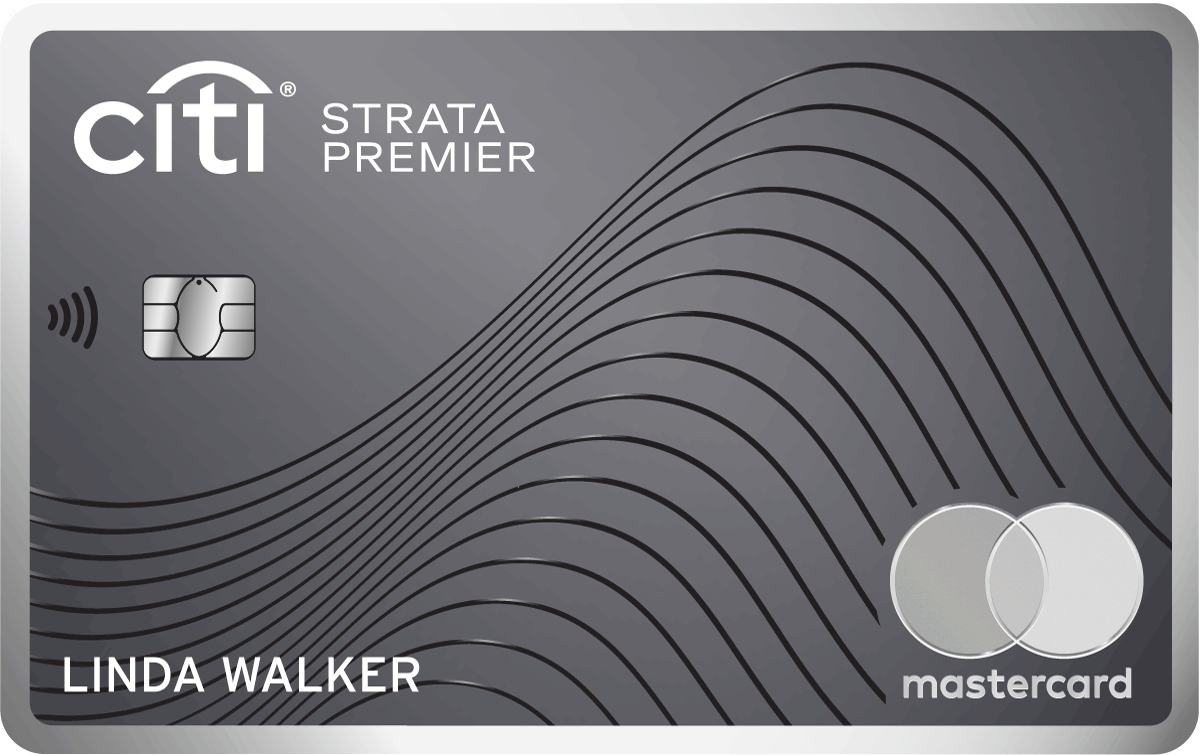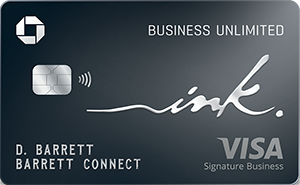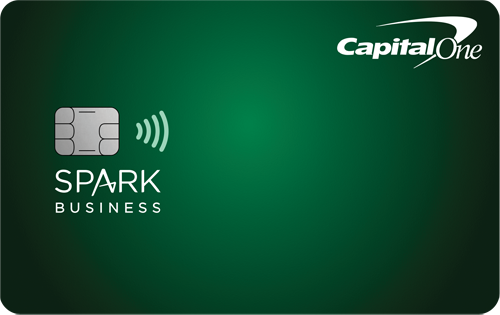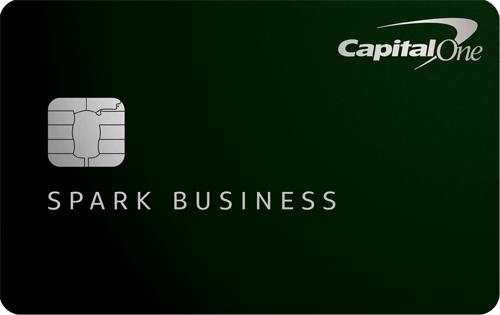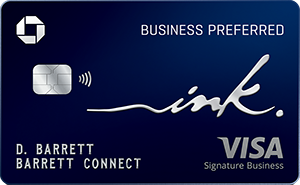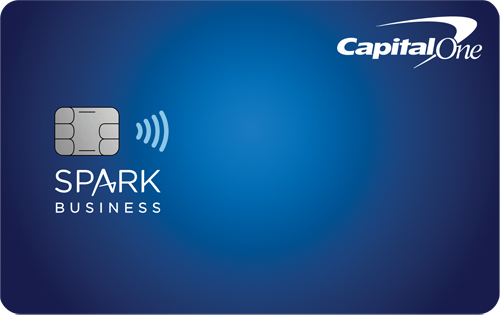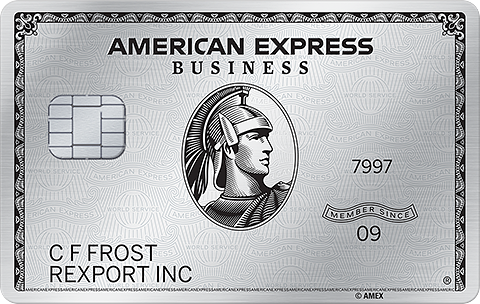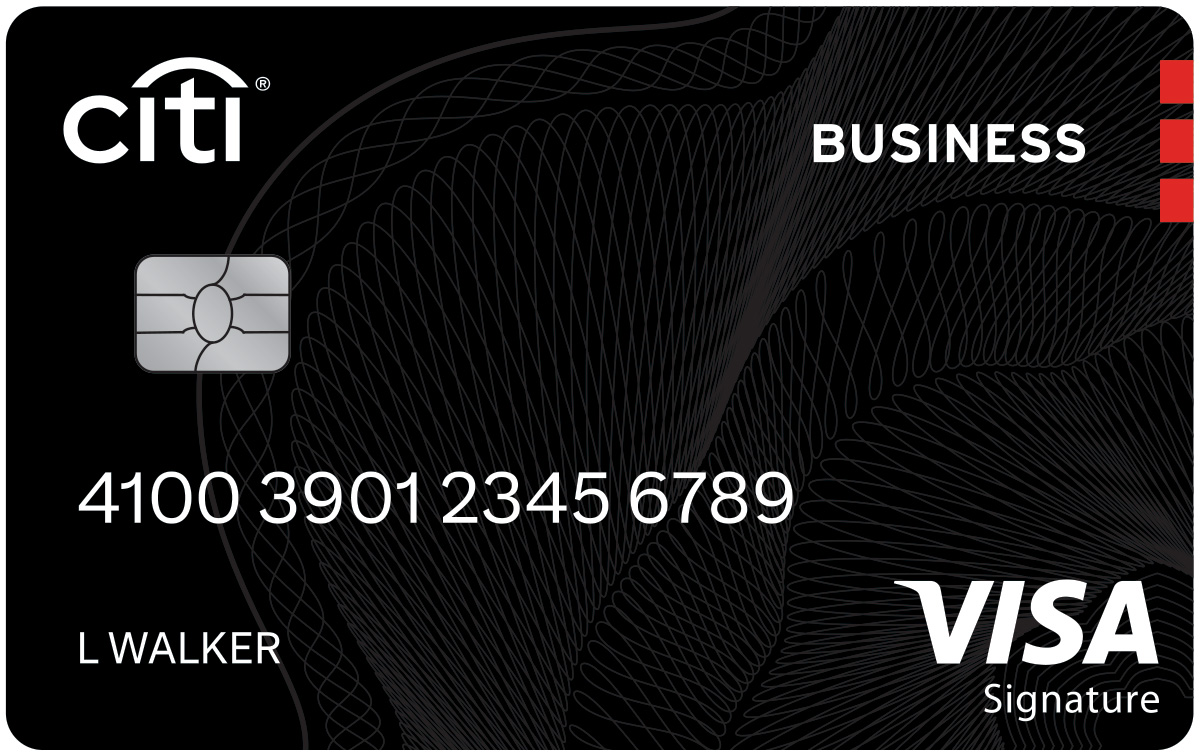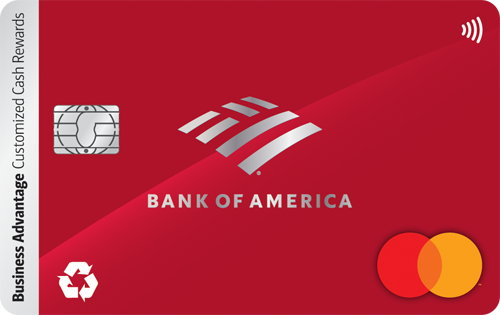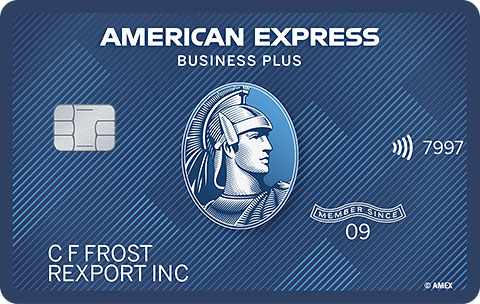The truth is, there's no single "best" credit card for everyone. But there is a best card for you.
My team and I have reviewed hundreds of credit cards and narrowed them down to the standouts in each category that best fit your needs. These are cards we recommend to our neighbors, aunties, and of course we use many of them ourselves!
If you're short on time, here are a few quick picks by category:
- 0% intro APR: Check out the Wells Fargo Reflect® Card (rates and fees). It offers 0% intro APR for 21 months from account opening on purchases and qualifying balance transfers (17.74%, 24.24%, or 28.49% Variable APR afterwards), plus a $0 annual fee.
- Cash back: Jump to Discover it® Cash Back. A high rewards category card for maximizing everyday purchases and a welcome offer than can be very lucrative.
- Travel rewards: Look at Capital One Venture Rewards Credit Card (see rates and fees). Simple travel miles on every purchase and flexible redemption options.
- Our team of experts reviewed over 260 credit cards
- We evaluate all credit cards across the same 4 key criteria: value, welcome experience, fees, and perks
- Our credit card ratings are never influenced by our advertising partners
- If we wouldn't recommend an offer to a close family member, we won't recommend it to you
Our aim is to maintain a balanced best-of list featuring top-scoring credit cards from reputable brands. 'Best for' category selections on this page are determined by our editors, and a single card may be recognized in multiple categories.
Best credit cards of November 2025
Good/Excellent (670-850)
Intro APR 0% intro APR for 21 months from account opening on purchases and qualifying balance transfers
Purchases: 0% intro APR for 21 months from account opening on purchases
Balance Transfers: 0% intro APR for 21 months from account opening on qualifying balance transfers
Regular APR
17.74%, 24.24%, or 28.49% Variable APR
Rewards
N/A
Annual Fee
$0
Welcome Offer
N/A
-
This no-frills card is a solid choice if your priority is to avoid credit card interest for as long as possible. It offers an incredible 0% intro APR for 21 months from account opening on purchases and qualifying balance transfers (17.74%, 24.24%, or 28.49% Variable APR after). The balance transfer fee (5%; $5 min.) is higher than some cards, but if you want an equally long intro APR on purchases and balance transfers, this card is hard to beat.
Read Full Review -
- Long 0% intro APR offer
- No annual fee
- Cellphone protection
- Balance transfer fee
- Foreign transaction fee
- No rewards program
-
- Apply Now to take advantage of this offer and learn more about product features, terms and conditions.
- 0% intro APR for 21 months from account opening on purchases and qualifying balance transfers. 17.74%, 24.24%, or 28.49% variable APR thereafter; balance transfers made within 120 days qualify for the intro rate, BT fee of 5%, min: $5.
- $0 annual fee.
- Up to $600 of cell phone protection against damage or theft. Subject to a $25 deductible.
- Through My Wells Fargo Deals, you can get access to personalized deals from a variety of merchants. It's an easy way to earn cash back as an account credit when you shop, dine, or enjoy an experience simply by using an eligible Wells Fargo credit card.
Good/Excellent (670-850)
Intro APR
Purchases: 0%, 15 months
Balance Transfers: 0%, 15 months
Regular APR
17.74% - 26.74% Variable APR
Rewards Earn 5% cash back on everyday purchases at different places you shop each quarter like grocery stores, restaurants, gas stations, and more, up to the quarterly maximum when you activate. Plus, earn unlimited 1% cash back on all other purchases.
1% - 5% Cashback
Annual Fee
$0
Welcome Offer INTRO OFFER: Unlimited Cashback Match for all new cardmembers–only from Discover. Discover will automatically match all the cash back you’ve earned at the end of your first year! There’s no minimum spending or maximum rewards. You could turn $150 cash back into $300.
Discover will match all the cash back you’ve earned at the end of your first year.
-
We think this card has among the highest cash back potential for cards with no annual fee. The key is the Unlimited Cashback Match — Discover automatically matches all the cash back new cardholders have earned at the end of the first year. That cash back can seriously add up when you earn 5% cash back on rotating bonus categories each quarter (when you activate them, up to the quarterly maximum) and 1% on other purchases.
Read Full Review -
- Rotating bonus categories
- Welcome bonus offer
- Great intro APR offer
- No annual fee
- No foreign transaction fee
- No fixed bonus categories
-
- INTRO OFFER: Unlimited Cashback Match for all new cardmembers–only from Discover. Discover will automatically match all the cash back you’ve earned at the end of your first year! There’s no minimum spending or maximum rewards. You could turn $150 cash back into $300.
- Earn 5% cash back on everyday purchases at different places you shop each quarter like grocery stores, restaurants, gas stations, and more, up to the quarterly maximum when you activate. Plus, earn unlimited 1% cash back on all other purchases.
- Redeem cash back for any amount
- Apply now and you could get a decision in as little as 90 seconds. No annual fee.
- Start shopping and earning rewards in minutes with your virtual card, before your physical card arrives in the mail, if eligible.
- Get a 0% intro APR for 15 months on purchases. Then 17.74% to 26.74% Standard Variable Purchase APR applies, based on credit worthiness.
- Terms and conditions apply.
Good/Excellent (670-850)
Intro APR
Purchases: 0%, 12 months on Purchases
Balance Transfers: 0%, 21 months on Balance Transfers
Regular APR
17.74% - 28.49% (Variable)
Rewards
N/A
Annual Fee N/A
$0
Welcome Offer
N/A
-
This is one of our favorite cards for balance transfers. It has 0% intro APR for 21 months on balance transfers and a discounted intro balance transfer fee for the first four months. That combo makes it one of the most generous balance transfer offers we’ve seen. But it doesn't have much ongoing value after the intro 0% APR period ends.
Read Full Review -
- Great intro APR
- No annual fee
- No late fees
- No penalty APR
- Choose your own payment date
- No rewards
- Foreign transaction fee
-
- No Late Fees, No Penalty Rate, and No Annual Fee... Ever
- 0% Intro APR on balance transfers for 21 months and on purchases for 12 months from date of account opening. After that the variable APR will be 17.74% - 28.49%, based on your creditworthiness. Balance transfers must be completed within 4 months of account opening.
- There is an intro balance transfer fee of 3% of each transfer (minimum $5) completed within the first 4 months of account opening. After that, your fee will be 5% of each transfer (minimum $5).
- Stay protected with Citi® Quick Lock
Good/Excellent (670-850)
Intro APR
Purchases: N/A
Balance Transfers: N/A
Regular APR
19.99% - 28.99% (Variable)
Rewards Earn unlimited 2X miles on every purchase. Earn unlimited 5X miles on hotels, vacation rentals, and rental cars booked through Capital One Travel.
2X-5X miles
Annual Fee
$95
Welcome Offer 75,000 Miles once you spend $4,000 on purchases within 3 months from account opening
75,000 Miles (worth $750 in travel)
-
This is one of our favorite credit cards — period. The huge 75,000-mile bonus (worth $750 toward travel) is one of the highest we’ve seen for a card with just a $95 annual fee. We love the dead-simple yet lucrative rewards structure: unlimited 2X miles on every purchase you make, plus 5X on hotels and rental cars booked through Capital One Travel, and up to a $120 credit for Global Entry or TSA PreCheck®.
Miles are easier to redeem than most travel cards with options like statement credits, travel bookings, or point transfers. Add it all up and it’s easy to see why this is one of the best (and most popular) travel cards available today.
-
- Excellent sign-up bonus
- Unlimited miles on purchases
- Travel credit
- Multiple ways to use miles
- No foreign transaction fee
- Annual fee
- No 0% intro APR offer
- Low cash back redemption value
-
- Enjoy a one-time bonus of 75,000 miles once you spend $4,000 on purchases within 3 months from account opening, equal to $750 in travel
- Earn unlimited 2X miles on every purchase, every day
- Earn 5X miles on hotels, vacation rentals and rental cars booked through Capital One Travel
- Miles won't expire for the life of the account and there's no limit to how many you can earn
- Receive up to a $120 credit for Global Entry or TSA PreCheck®
- Use your miles to get reimbursed for any travel purchase—or redeem by booking a trip through Capital One Travel
- Enjoy a $50 experience credit and other premium benefits with every hotel and vacation rental booked from the Lifestyle Collection
- Transfer your miles to your choice of 15+ travel loyalty programs
Good/Excellent (670-850)
Intro APR 0% intro APR for 12 months from account opening on purchases and qualifying balance transfers
Purchases: 0% intro APR for 12 months from account opening on purchases
Balance Transfers: 0% intro APR for 12 months from account opening on qualifying balance transfers
Regular APR
18.74%, 24.74%, or 28.74% Variable APR
Rewards Earn unlimited 2% cash rewards on purchases.
2% cash rewards
Annual Fee
$0
Welcome Offer Earn a $200 cash rewards bonus after spending $500 in purchases in the first 3 months.
$200 cash rewards
-
This card’s unlimited 2% cash rewards on purchases is the highest we’ve seen for a flat-rate rewards card with no annual fee. It also has an incredibly easy-to-earn $200 welcome bonus after spending $500 in purchases in the first 3 months. The intro APR is decent too -- 0% intro APR for 12 months from account opening on purchases and qualifying balance transfers (18.74%, 24.74%, or 28.74% Variable APR applies after). We simply haven’t come across this combination of top perks in one card before.
Read Full Review -
- Unlimited 2% cash rewards
- Long 0% intro APR offer
- Generous cash rewards welcome bonus
- No annual fee
- Cellphone protections
- No bonus categories
- Foreign transaction fees
- Balance transfer fee
-
- Apply Now to take advantage of this offer and learn more about product features, terms and conditions.
- Earn a $200 cash rewards bonus after spending $500 in purchases in the first 3 months.
- Earn unlimited 2% cash rewards on purchases.
- 0% intro APR for 12 months from account opening on purchases and qualifying balance transfers. 18.74%, 24.74%, or 28.74% variable APR thereafter; balance transfers made within 120 days qualify for the intro rate and fee of 3% then a BT fee of up to 5%, min: $5.
- $0 annual fee.
- No categories to track or remember and cash rewards don’t expire as long as your account remains open.
- Find tickets to top sports and entertainment events, book travel, make dinner reservations and more with your complimentary 24/7 Visa Signature® Concierge.
- Up to $600 of cell phone protection against damage or theft. Subject to a $25 deductible.
On American Express' Secure Website.
Terms apply
On American Express' Secure Website.
Terms apply
Good/Excellent
Intro APR
Purchases: 0% on purchases, 12 months
Balance Transfers: 0%, 12 months
APR
19.74%-28.74% Variable
Rewards Earn 6% cash back at U.S. supermarkets on up to $6,000 per year in eligible purchases (then 1%), 6% cash back on select U.S. streaming subscriptions, 3% cash back at eligible U.S. gas stations and on transit (including taxis/rideshare, parking, tolls, trains, buses and more) purchases and 1% cash back on other purchases. Cash Back is received in the form of Reward Dollars that can be redeemed as a statement credit and at Amazon.com checkout.
1%-6% Cash Back
Annual Fee
$0 intro annual fee for the first year, then $95.
Welcome Offer Earn a $250 statement credit after you spend $3,000 in eligible purchases on your new Card within the first 6 months.
$250
-
This card is a smart choice for earning top-tier rewards on everyday purchases. It features a market-leading rate of a whopping 6% cash back at U.S. supermarkets (on up to $6,000 per year), 6% on select U.S. streaming services, and 3% on U.S. gas and transit. Plus, there’s a strong welcome offer: Earn a $250 statement credit after spending $3,000 in the first 6 months. With 0% intro APR on purchases and balance transfers for the first 12 months and $0 annual fee for the first year (then $95), it’s one of our favorite credit cards for a reason. Terms apply.
Read Full Review -
- Big welcome offer
- U.S. supermarkets rewards
- U.S. gas stations rewards
- Streaming subscription rewards
- Annual fee
- Foreign transaction fee
-
- Earn a $250 statement credit after you spend $3,000 in eligible purchases on your new Card within the first 6 months.
- $0 intro annual fee for the first year, then $95.
- Low Intro APR: 0% intro APR on purchases and balance transfers for 12 months from the date of account opening. After that, your APR will be a variable APR of 19.74% - 28.74%.
- Plan It®: Buy now, pay later with Plan It. Split purchases of $100 or more into equal monthly installments with a fixed fee so you don’t have the pressure of paying all at once. Simply select the purchase in your online account or the American Express® App to see your plan options. Plus, you’ll still earn rewards on purchases the way you usually do.
- Earn 6% cash back at U.S. supermarkets on up to $6,000 per year in eligible purchases (then 1%), 6% cash back on select U.S. streaming subscriptions, 3% cash back at eligible U.S. gas stations and on transit (including taxis/rideshare, parking, tolls, trains, buses and more) purchases and 1% cash back on other purchases. Cash Back is received in the form of Reward Dollars that can be redeemed as a statement credit and at Amazon.com checkout.
- Get up to a $10 monthly statement credit after using your enrolled Blue Cash Preferred® Card for a subscription purchase, including a bundle subscription purchase, at disneyplus.com, Hulu.com, or Plus.espn.com U.S. websites. Subject to auto-renewal.
- Apply with confidence. Know if you're approved for a Card with no impact to your credit score. If you're approved and you choose to accept this Card, your credit score may be impacted.
- Terms Apply.
Good/Excellent (670-850)
Intro APR 0% Intro APR on Purchases
Purchases: 0% Intro APR on Purchases, 15 months
Balance Transfers: 0% Intro APR on Balance Transfers, 15 months
Regular APR
18.74% - 28.24% Variable
Rewards 5% cash back on up to $1,500 in combined purchases in bonus categories each quarter you activate. Enjoy new 5% categories each quarter! Plus, earn 5% cash back on travel purchased through Chase Travel℠, 3% on dining and drugstores, and 1% on all other purchases.
5% cash back offer
Annual Fee
$0
Welcome Offer Earn a $200 Bonus after you spend $500 on purchases in your first 3 months from account opening!
$200 bonus
-
This Chase card is one of our favorites, and with good reason. You earn 5% cash back on up to $1,500 in combined purchases in bonus categories each quarter you activate, alongside other standout perks (and at least 1% on all purchases). Plus, this one comes without an annual fee and with a generous welcome bonus.
Read Full Review -
- Big sign-up bonus
- Lucrative cash back program
- Long 0% intro APR
- No annual fee
- Purchase and travel protections
- Foreign transaction fee
-
- Earn a $200 Bonus after you spend $500 on purchases in your first 3 months from account opening
- 5% cash back on up to $1,500 in combined purchases in bonus categories each quarter you activate. Enjoy new 5% categories each quarter!
- 5% cash back on travel purchased through Chase Travel℠, our premier rewards program that lets you redeem rewards for cash back, travel, gift cards and more
- 3% cash back on drugstore purchases and dining at restaurants, including takeout and eligible delivery service, and unlimited 1% cash back on all other purchases.
- No minimum to redeem for cash back. You can choose to receive a statement credit or direct deposit into most U.S. checking and savings accounts. Cash Back rewards do not expire as long as your account is open!
- 0% Intro APR for 15 months from account opening on purchases and balance transfers, then a variable APR of 18.74%-28.24%.
- No annual fee – You won't have to pay an annual fee for all the great features that come with your Freedom Flex® card
- Keep tabs on your credit health - Chase Credit Journey helps you monitor your credit with free access to your latest score, real-time alerts, and more.
- Member FDIC
Citi Custom Cash® Card
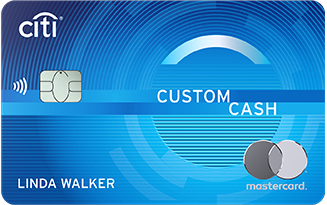
Good/Excellent (670-850)
Intro APR
Purchases: 0%, 15 months on Purchases
Balance Transfers: 0%, 15 months on Balance Transfers
Regular APR
18.24% - 28.24% (Variable)
Rewards Earn 5% cash back on purchases in your top eligible spend category each billing cycle, up to the first $500 spent, 1% cash back thereafter. Also, earn unlimited 1% cash back on all other purchases. Special Travel Offer: Earn an additional 4% cash back on hotels, car rentals, and attractions booked on Citi Travel℠ portal through 6/30/2026.
1% - 5% cash back
Annual Fee N/A
$0
Welcome Offer Earn $200 in cash back after you spend $1500 on purchases in the first 6 months of account opening. This bonus offer will be fulfilled as 20,000 ThankYou® Points, which can be redeemed for $200 cash back.
20,000 ThankYou® Points
-
We love this card's easy-to-use yet lucrative cash back program. There aren't many no annual fee cards that earn 5% back, and most of the others have rotating bonus categories that change every quarter. This card automatically adjusts to your spending habits, so getting the most out of it is a breeze.
-
- Cash back rewards
- Sign-up bonus
- No annual fee
- 0% intro APR offer
- Bonus cash back limits
- Foreign transaction fee
-
- Earn $200 cash back after you spend $1,500 on purchases in the first 6 months of account opening. This bonus offer will be fulfilled as 20,000 ThankYou® Points, which can be redeemed for $200 cash back.
- 0% Intro APR on balance transfers and purchases for 15 months. After that, the variable APR will be 18.24% - 28.24%, based on your creditworthiness.
- Earn 5% cash back on purchases in your top eligible spend category each billing cycle, up to the first $500 spent, 1% cash back thereafter. Also, earn unlimited 1% cash back on all other purchases. Special Travel Offer: Earn an additional 4% cash back on hotels, car rentals, and attractions booked on Citi Travel℠ portal through 6/30/2026.
- No rotating bonus categories to sign up for – as your spending changes each billing cycle, your earn adjusts automatically when you spend in any of the eligible categories.
- No Annual Fee
- Citi will only issue one Citi Custom Cash® Card account per person.
Bank of America® Customized Cash Rewards Secured credit card
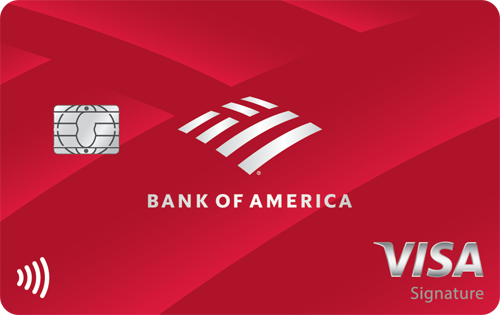
Fair/New to Credit Under(669)
Intro APR
Purchases: N/A
Balance Transfers: N/A
Regular APR
29.24% (Variable)
Rewards Earn 3% cash back in the category of your choice: gas, online shopping, dining, travel, drug stores, or home improvement/furnishings and 2% cash back at grocery stores and wholesale clubs on the first $2,500 in combined choice category/grocery store/wholesale club purchases each quarter, then earn 1%
1% - 3% cash back
Annual Fee
$0
Welcome Offer
N/A
-
One of the most competitive secured credit cards we've come across. The rewards program and $0 annual fee are standout features that beat many similar offers.
-
- Cash back rewards
- No minimum credit score required
- No annual fee
- Can qualify to have security deposit returned
- Minimum deposit amount
- Foreign transaction fee
-
- A minimum security deposit of $200 (maximum of $5,000) is required to open this account.
- Earn 3% cash back in the category of your choice, automatic 2% at grocery stores and wholesale clubs (up to $2,500 in combined choice category/grocery store/wholesale club quarterly purchases) and unlimited 1% on all other purchases.
- No annual fee and no expiration on rewards.
- Contactless Cards - The security of a chip card, with the convenience of a tap.
Good/Excellent (670-850)
Intro APR 0% intro APR for 21 months from account opening on purchases and qualifying balance transfers
Purchases: 0% intro APR for 21 months from account opening on purchases
Balance Transfers: 0% intro APR for 21 months from account opening on qualifying balance transfers
Regular APR
17.74%, 24.24%, or 28.49% Variable APR
Rewards
N/A
Annual Fee
$0
Welcome Offer
N/A
-
This no-frills card is a solid choice if your priority is to avoid credit card interest for as long as possible. It offers an incredible 0% intro APR for 21 months from account opening on purchases and qualifying balance transfers (17.74%, 24.24%, or 28.49% Variable APR after). The balance transfer fee (5%; $5 min.) is higher than some cards, but if you want an equally long intro APR on purchases and balance transfers, this card is hard to beat.
Read Full Review -
- Long 0% intro APR offer
- No annual fee
- Cellphone protection
- Balance transfer fee
- Foreign transaction fee
- No rewards program
-
- Apply Now to take advantage of this offer and learn more about product features, terms and conditions.
- 0% intro APR for 21 months from account opening on purchases and qualifying balance transfers. 17.74%, 24.24%, or 28.49% variable APR thereafter; balance transfers made within 120 days qualify for the intro rate, BT fee of 5%, min: $5.
- $0 annual fee.
- Up to $600 of cell phone protection against damage or theft. Subject to a $25 deductible.
- Through My Wells Fargo Deals, you can get access to personalized deals from a variety of merchants. It's an easy way to earn cash back as an account credit when you shop, dine, or enjoy an experience simply by using an eligible Wells Fargo credit card.
Good/Excellent (670-850)
Intro APR
Purchases: 0%, 12 months on Purchases
Balance Transfers: 0%, 21 months on Balance Transfers
Regular APR
17.74% - 28.49% (Variable)
Rewards
N/A
Annual Fee N/A
$0
Welcome Offer
N/A
-
This is one of our favorite cards for balance transfers. It has 0% intro APR for 21 months on balance transfers and a discounted intro balance transfer fee for the first four months. That combo makes it one of the most generous balance transfer offers we’ve seen. But it doesn't have much ongoing value after the intro 0% APR period ends.
Read Full Review -
- Great intro APR
- No annual fee
- No late fees
- No penalty APR
- Choose your own payment date
- No rewards
- Foreign transaction fee
-
- No Late Fees, No Penalty Rate, and No Annual Fee... Ever
- 0% Intro APR on balance transfers for 21 months and on purchases for 12 months from date of account opening. After that the variable APR will be 17.74% - 28.49%, based on your creditworthiness. Balance transfers must be completed within 4 months of account opening.
- There is an intro balance transfer fee of 3% of each transfer (minimum $5) completed within the first 4 months of account opening. After that, your fee will be 5% of each transfer (minimum $5).
- Stay protected with Citi® Quick Lock
Good/Excellent (670-850)
Intro APR
Purchases: 0%, 15 months
Balance Transfers: 0%, 15 months
Regular APR
17.74% - 26.74% Variable APR
Rewards Earn 5% cash back on everyday purchases at different places you shop each quarter like grocery stores, restaurants, gas stations, and more, up to the quarterly maximum when you activate. Plus, earn unlimited 1% cash back on all other purchases.
1% - 5% Cashback
Annual Fee
$0
Welcome Offer INTRO OFFER: Unlimited Cashback Match for all new cardmembers–only from Discover. Discover will automatically match all the cash back you’ve earned at the end of your first year! There’s no minimum spending or maximum rewards. You could turn $150 cash back into $300.
Discover will match all the cash back you’ve earned at the end of your first year.
-
We think this card has among the highest cash back potential for cards with no annual fee. The key is the Unlimited Cashback Match — Discover automatically matches all the cash back new cardholders have earned at the end of the first year. That cash back can seriously add up when you earn 5% cash back on rotating bonus categories each quarter (when you activate them, up to the quarterly maximum) and 1% on other purchases.
Read Full Review -
- Rotating bonus categories
- Welcome bonus offer
- Great intro APR offer
- No annual fee
- No foreign transaction fee
- No fixed bonus categories
-
- INTRO OFFER: Unlimited Cashback Match for all new cardmembers–only from Discover. Discover will automatically match all the cash back you’ve earned at the end of your first year! There’s no minimum spending or maximum rewards. You could turn $150 cash back into $300.
- Earn 5% cash back on everyday purchases at different places you shop each quarter like grocery stores, restaurants, gas stations, and more, up to the quarterly maximum when you activate. Plus, earn unlimited 1% cash back on all other purchases.
- Redeem cash back for any amount
- Apply now and you could get a decision in as little as 90 seconds. No annual fee.
- Start shopping and earning rewards in minutes with your virtual card, before your physical card arrives in the mail, if eligible.
- Get a 0% intro APR for 15 months on purchases. Then 17.74% to 26.74% Standard Variable Purchase APR applies, based on credit worthiness.
- Terms and conditions apply.
Good/Excellent (670-850)
Intro APR 0% Intro APR on Purchases and Balance Transfers for 15 months
Purchases: 0% Intro APR on Purchases, 15 months
Balance Transfers: 0% Intro APR on Balance Transfers, 15 months
Regular APR
18.74% - 28.24% Variable
Rewards Enjoy 5% cash back on travel purchased through Chase Travel℠, our premier rewards program that lets you redeem rewards for cash back, travel, gift cards and more; 3% cash back on drugstore purchases and dining at restaurants, including takeout and eligible delivery service, and 1.5% on all other purchases
1.5% - 5% cash back
Annual Fee
$0
Welcome Offer Intro Offer: Earn a $200 Bonus after you spend $500 on purchases in your first 3 months from account opening
Earn $200 cash back
-
The Chase Freedom Unlimited® is the ideal all-in-one card, offering both big upfront value and long-term rewards. New cardholders can earn a $200 bonus after spending $500 in the first 3 months. Plus, enjoy unlimited 3% back on dining and drugstores, 5% on travel booked through Chase Travel, and 1.5% on all other purchases. With the added benefit of 0% intro APR for 15 months, this card is perfect for a one-card wallet.
Read Full Review -
- Innovative sign-up bonus
- Purchase and travel protections
- Robust rewards program
- Great intro APR
- No annual fee
- Limited bonus opportunities on everyday spending
- Foreign transaction fee
-
- Intro Offer: Earn a $200 Bonus after you spend $500 on purchases in your first 3 months from account opening
- Enjoy 5% cash back on travel purchased through Chase Travel℠, our premier rewards program that lets you redeem rewards for cash back, travel, gift cards and more; 3% cash back on drugstore purchases and dining at restaurants, including takeout and eligible delivery service, and 1.5% on all other purchases.
- No minimum to redeem for cash back. You can choose to receive a statement credit or direct deposit into most U.S. checking and savings accounts. Cash Back rewards do not expire as long as your account is open!
- Enjoy 0% Intro APR for 15 months from account opening on purchases and balance transfers, then a variable APR of 18.74% - 28.24%.
- No annual fee – You won't have to pay an annual fee for all the great features that come with your Freedom Unlimited® card
- Keep tabs on your credit health, Chase Credit Journey helps you monitor your credit with free access to your latest score, alerts, and more.
- Member FDIC
On Bank of America's Secure Website.
On Bank of America's Secure Website.
Good/Excellent (670-850)
Intro APR 0% Intro APR for 15 billing cycles for purchases, and for any balance transfers made in the first 60 days. After the Intro APR offer ends, a Variable APR that’s currently 17.74% - 27.74% will apply. A 3% Intro balance transfer fee will apply for the first 60 days your account is open. After the Intro balance transfer fee offer ends, the fee for future balance transfers is 4%. Balance transfers may not be used to pay any account provided by Bank of America.
Purchases: 0% Intro APR for 15 billing cycles for purchases
Balance Transfers: 0% Intro APR for 15 billing cycles for any balance transfers made in the first 60 days
Regular APR
17.74% - 27.74% (Variable)
Rewards Earn unlimited 1.5 points per $1 spent on all purchases, with no annual fee and no foreign transaction fees, and your points don't expire as long as your account remains open. Earn 3 points per $1 spent on travel purchases booked through the Bank of America Travel Center.
1.5-3 points per dollar
Annual Fee
$0
Welcome Offer 25,000 online bonus points after you make at least $1,000 in purchases in the first 90 days of account opening - that can be a $250 statement credit toward travel purchases
25,000 points (worth $250)
-
If you’re looking for a top travel card without an annual fee, this one is tough to beat. It offers a generous welcome bonus worth $250 after spending just $1,000 within 90 days of account opening, plus a simple yet valuable rewards structure: unlimited 1.5X points on all purchases and 3X points on travel booked through Bank of America.
A 0% intro APR period of 15 billing cycles for both purchases and balance transfers (then 17.74% - 27.74% (Variable)) allows you to avoid interest for over a year – a very rare perk for a travel card. And while many travel cards charge hundreds of dollars in annual fees, this one charges $0 – making it one of our top value picks.
Read Full Review -
- Big sign-up bonus
- No annual fee
- Competitive rewards rate on purchases
- Great intro APR offer on purchases and balance transfers
- Limited ways to use points
-
- 25,000 online bonus points after you make at least $1,000 in purchases in the first 90 days of account opening - that can be a $250 statement credit toward travel purchases.
- Earn unlimited 1.5 points per $1 spent on all purchases, with no annual fee and no foreign transaction fees and your points don't expire as long as your account remains open.
- Earn 3 points per $1 spent on travel purchases booked through the Bank of America Travel Center.
- Use your card to book your trip how and where you want - you're not limited to specific websites with blackout dates or restrictions.
- Redeem points for a statement credit to pay for travel or dining purchases, such as flights, hotel stays, car and vacation rentals, baggage fees, and also at restaurants including takeout.
- 0% Intro APR for 15 billing cycles for purchases, and for any balance transfers made in the first 60 days. After the Intro APR offer ends, a Variable APR that’s currently 17.74% - 27.74% will apply. A 3% Intro balance transfer fee will apply for the first 60 days your account is open. After the Intro balance transfer fee offer ends, the fee for future balance transfers is 4%. Balance transfers may not be used to pay any account provided by Bank of America.
- If you're a Bank of America Preferred Rewards® member, you can earn 25%-75% more points on every purchase. That means instead of earning an unlimited 1.5 points for every $1, you could earn 1.87-2.62 points for every $1 you spend on purchases. You could earn 3.75-5.25 points for every $1 you spend on travel purchases made through the Bank of America Travel Center.
- Contactless Cards - The security of a chip card, with the convenience of a tap.
- This online only offer may not be available if you leave this page or if you visit a Bank of America financial center. You can take advantage of this offer when you apply now.
Citi Custom Cash® Card

Good/Excellent (670-850)
Intro APR
Purchases: 0%, 15 months on Purchases
Balance Transfers: 0%, 15 months on Balance Transfers
Regular APR
18.24% - 28.24% (Variable)
Rewards Earn 5% cash back on purchases in your top eligible spend category each billing cycle, up to the first $500 spent, 1% cash back thereafter. Also, earn unlimited 1% cash back on all other purchases. Special Travel Offer: Earn an additional 4% cash back on hotels, car rentals, and attractions booked on Citi Travel℠ portal through 6/30/2026.
1% - 5% cash back
Annual Fee N/A
$0
Welcome Offer Earn $200 in cash back after you spend $1500 on purchases in the first 6 months of account opening. This bonus offer will be fulfilled as 20,000 ThankYou® Points, which can be redeemed for $200 cash back.
20,000 ThankYou® Points
-
We love this card's easy-to-use yet lucrative cash back program. There aren't many no annual fee cards that earn 5% back, and most of the others have rotating bonus categories that change every quarter. This card automatically adjusts to your spending habits, so getting the most out of it is a breeze.
-
- Cash back rewards
- Sign-up bonus
- No annual fee
- 0% intro APR offer
- Bonus cash back limits
- Foreign transaction fee
-
- Earn $200 cash back after you spend $1,500 on purchases in the first 6 months of account opening. This bonus offer will be fulfilled as 20,000 ThankYou® Points, which can be redeemed for $200 cash back.
- 0% Intro APR on balance transfers and purchases for 15 months. After that, the variable APR will be 18.24% - 28.24%, based on your creditworthiness.
- Earn 5% cash back on purchases in your top eligible spend category each billing cycle, up to the first $500 spent, 1% cash back thereafter. Also, earn unlimited 1% cash back on all other purchases. Special Travel Offer: Earn an additional 4% cash back on hotels, car rentals, and attractions booked on Citi Travel℠ portal through 6/30/2026.
- No rotating bonus categories to sign up for – as your spending changes each billing cycle, your earn adjusts automatically when you spend in any of the eligible categories.
- No Annual Fee
- Citi will only issue one Citi Custom Cash® Card account per person.
Good/Excellent (670-850)
Intro APR
Purchases: 0%, 15 months
Balance Transfers: 0%, 15 months
Regular APR
17.74% - 26.74% Variable APR
Rewards Earn 5% cash back on everyday purchases at different places you shop each quarter like grocery stores, restaurants, gas stations, and more, up to the quarterly maximum when you activate. Plus, earn unlimited 1% cash back on all other purchases.
1% - 5% Cashback
Annual Fee
$0
Welcome Offer INTRO OFFER: Unlimited Cashback Match for all new cardmembers–only from Discover. Discover will automatically match all the cash back you’ve earned at the end of your first year! There’s no minimum spending or maximum rewards. You could turn $150 cash back into $300.
Discover will match all the cash back you’ve earned at the end of your first year.
-
We think this card has among the highest cash back potential for cards with no annual fee. The key is the Unlimited Cashback Match — Discover automatically matches all the cash back new cardholders have earned at the end of the first year. That cash back can seriously add up when you earn 5% cash back on rotating bonus categories each quarter (when you activate them, up to the quarterly maximum) and 1% on other purchases.
Read Full Review -
- Rotating bonus categories
- Welcome bonus offer
- Great intro APR offer
- No annual fee
- No foreign transaction fee
- No fixed bonus categories
-
- INTRO OFFER: Unlimited Cashback Match for all new cardmembers–only from Discover. Discover will automatically match all the cash back you’ve earned at the end of your first year! There’s no minimum spending or maximum rewards. You could turn $150 cash back into $300.
- Earn 5% cash back on everyday purchases at different places you shop each quarter like grocery stores, restaurants, gas stations, and more, up to the quarterly maximum when you activate. Plus, earn unlimited 1% cash back on all other purchases.
- Redeem cash back for any amount
- Apply now and you could get a decision in as little as 90 seconds. No annual fee.
- Start shopping and earning rewards in minutes with your virtual card, before your physical card arrives in the mail, if eligible.
- Get a 0% intro APR for 15 months on purchases. Then 17.74% to 26.74% Standard Variable Purchase APR applies, based on credit worthiness.
- Terms and conditions apply.
Good/Excellent (670-850)
Intro APR 0% intro APR for 12 months from account opening on purchases and qualifying balance transfers
Purchases: 0% intro APR for 12 months from account opening on purchases
Balance Transfers: 0% intro APR for 12 months from account opening on qualifying balance transfers
Regular APR
18.74%, 24.74%, or 28.74% Variable APR
Rewards Earn unlimited 2% cash rewards on purchases.
2% cash rewards
Annual Fee
$0
Welcome Offer Earn a $200 cash rewards bonus after spending $500 in purchases in the first 3 months.
$200 cash rewards
-
This card’s unlimited 2% cash rewards on purchases is the highest we’ve seen for a flat-rate rewards card with no annual fee. It also has an incredibly easy-to-earn $200 welcome bonus after spending $500 in purchases in the first 3 months. The intro APR is decent too -- 0% intro APR for 12 months from account opening on purchases and qualifying balance transfers (18.74%, 24.74%, or 28.74% Variable APR applies after). We simply haven’t come across this combination of top perks in one card before.
Read Full Review -
- Unlimited 2% cash rewards
- Long 0% intro APR offer
- Generous cash rewards welcome bonus
- No annual fee
- Cellphone protections
- No bonus categories
- Foreign transaction fees
- Balance transfer fee
-
- Apply Now to take advantage of this offer and learn more about product features, terms and conditions.
- Earn a $200 cash rewards bonus after spending $500 in purchases in the first 3 months.
- Earn unlimited 2% cash rewards on purchases.
- 0% intro APR for 12 months from account opening on purchases and qualifying balance transfers. 18.74%, 24.74%, or 28.74% variable APR thereafter; balance transfers made within 120 days qualify for the intro rate and fee of 3% then a BT fee of up to 5%, min: $5.
- $0 annual fee.
- No categories to track or remember and cash rewards don’t expire as long as your account remains open.
- Find tickets to top sports and entertainment events, book travel, make dinner reservations and more with your complimentary 24/7 Visa Signature® Concierge.
- Up to $600 of cell phone protection against damage or theft. Subject to a $25 deductible.
On Bank of America's Secure Website.
On Bank of America's Secure Website.
Earn 6% cash back in the category of your choice -- like dining, travel, or online shopping -- for the first year. Plus, score a $200 cash rewards bonus after qualifying purchases.
Good/Excellent (670-850)
Intro APR 0% Intro APR for 15 billing cycles for purchases, and for any balance transfers made in the first 60 days. After the Intro APR offer ends, a Variable APR that’s currently 17.74% - 27.74% will apply. A 3% Intro balance transfer fee will apply for the first 60 days your account is open. After the Intro balance transfer fee offer ends, the fee for future balance transfers is 4%. Balance transfers may not be used to pay any account provided by Bank of America.
Purchases: 0% Intro APR for 15 billing cycles for purchases
Balance Transfers: 0% Intro APR for 15 billing cycles for any balance transfers made in the first 60 days
Regular APR
17.74% - 27.74% (Variable)
Rewards Earn 6% cash back for the first year in the category of your choice, 2% cash back at grocery stores and wholesale clubs, and unlimited 1% cash back on all other purchases. Earn 6% and 2% cash back on the first $2,500 in combined purchases each quarter in the choice category, and at grocery stores and wholesale clubs, then earn unlimited 1% thereafter. After the first year from account opening, you’ll earn 3% cash back on purchases in your choice category and 2% cash back at grocery stores and wholesale clubs up to the quarterly maximum.
1% - 6% cash back
Annual Fee
$0
Welcome Offer $200 online cash rewards bonus after you make at least $1,000 in purchases in the first 90 days of account opening
$200 cash back
-
This card's wide range of extra cash back options speaks for itself, with a choice of six bonus categories you can change monthly for 6% earnings for the first year in the category of your choice. And you can earn 2% back automatically at grocery stores and wholesale clubs. No annual fee and a nice welcome bonus also make this one a winner. Plus, if you're a Bank of America Preferred Rewards member, this card will be even more valuable for you.
Read Full Review -
- Competitive welcome bonus
- Bonus cash back in a category of your choice
- No annual fee
- Great intro & transfer APR offer
- Relationship rewards bonus
- Foreign transaction fee
- Limit on bonus cash back
-
- New offer! Earn 6% cash back for the first year in the category of your choice: gas and EV charging stations; online shopping, including cable, internet, phone plans and streaming; dining; travel; drug stores and pharmacies; or home improvement and furnishings. You’ll automatically earn 2% cash back at grocery stores and wholesale clubs, and unlimited 1% cash back on all other purchases. After the first year from account opening, you’ll earn 3% cash back on purchases in your choice category.
- Earn 6% and 2% cash back on the first $2,500 in combined purchases each quarter in the choice category, and at grocery stores and wholesale clubs, then earn unlimited 1% thereafter. After the 3% first-year bonus offer ends, you will earn 3% and 2% cash back on these purchases up to the quarterly maximum.
- $200 online cash rewards bonus after you make at least $1,000 in purchases in the first 90 days of account opening.
- With the Bank of America Preferred Rewards® program, members can earn 25%-75% more cash back on every purchase. That means the 3% choice category could go up to 3.75%-5.25%. The Preferred Rewards bonus is not applied to the 3% first-year bonus.
- No annual fee and cash rewards don’t expire as long as your account remains open.
- 0% Intro APR for 15 billing cycles for purchases, and for any balance transfers made in the first 60 days. After the Intro APR offer ends, a Variable APR that’s currently 17.74% - 27.74% will apply. A 3% Intro balance transfer fee will apply for the first 60 days your account is open. After the Intro balance transfer fee offer ends, the fee for future balance transfers is 4%. Balance transfers may not be used to pay any account provided by Bank of America.
- Contactless Cards - The security of a chip card, with the convenience of a tap.
- This online only offer may not be available if you leave this page or if you visit a Bank of America financial center. You can take advantage of this offer when you apply now.
Good/Excellent (670-850)
Intro APR 0% Intro APR on Purchases and Balance Transfers for 15 months
Purchases: 0% Intro APR on Purchases, 15 months
Balance Transfers: 0% Intro APR on Balance Transfers, 15 months
Regular APR
18.74% - 28.24% Variable
Rewards Enjoy 5% cash back on travel purchased through Chase Travel℠, our premier rewards program that lets you redeem rewards for cash back, travel, gift cards and more; 3% cash back on drugstore purchases and dining at restaurants, including takeout and eligible delivery service, and 1.5% on all other purchases
1.5% - 5% cash back
Annual Fee
$0
Welcome Offer Intro Offer: Earn a $200 Bonus after you spend $500 on purchases in your first 3 months from account opening
Earn $200 cash back
-
The Chase Freedom Unlimited® is the ideal all-in-one card, offering both big upfront value and long-term rewards. New cardholders can earn a $200 bonus after spending $500 in the first 3 months. Plus, enjoy unlimited 3% back on dining and drugstores, 5% on travel booked through Chase Travel, and 1.5% on all other purchases. With the added benefit of 0% intro APR for 15 months, this card is perfect for a one-card wallet.
Read Full Review -
- Innovative sign-up bonus
- Purchase and travel protections
- Robust rewards program
- Great intro APR
- No annual fee
- Limited bonus opportunities on everyday spending
- Foreign transaction fee
-
- Intro Offer: Earn a $200 Bonus after you spend $500 on purchases in your first 3 months from account opening
- Enjoy 5% cash back on travel purchased through Chase Travel℠, our premier rewards program that lets you redeem rewards for cash back, travel, gift cards and more; 3% cash back on drugstore purchases and dining at restaurants, including takeout and eligible delivery service, and 1.5% on all other purchases.
- No minimum to redeem for cash back. You can choose to receive a statement credit or direct deposit into most U.S. checking and savings accounts. Cash Back rewards do not expire as long as your account is open!
- Enjoy 0% Intro APR for 15 months from account opening on purchases and balance transfers, then a variable APR of 18.74% - 28.24%.
- No annual fee – You won't have to pay an annual fee for all the great features that come with your Freedom Unlimited® card
- Keep tabs on your credit health, Chase Credit Journey helps you monitor your credit with free access to your latest score, alerts, and more.
- Member FDIC
On American Express' Secure Website.
Terms apply
On American Express' Secure Website.
Terms apply
Good/Excellent
Intro APR
Purchases: 0% on purchases, 12 months
Balance Transfers: 0%, 12 months
APR
19.74%-28.74% Variable
Rewards Earn 6% cash back at U.S. supermarkets on up to $6,000 per year in eligible purchases (then 1%), 6% cash back on select U.S. streaming subscriptions, 3% cash back at eligible U.S. gas stations and on transit (including taxis/rideshare, parking, tolls, trains, buses and more) purchases and 1% cash back on other purchases. Cash Back is received in the form of Reward Dollars that can be redeemed as a statement credit and at Amazon.com checkout.
1%-6% Cash Back
Annual Fee
$0 intro annual fee for the first year, then $95.
Welcome Offer Earn a $250 statement credit after you spend $3,000 in eligible purchases on your new Card within the first 6 months.
$250
-
This card is a smart choice for earning top-tier rewards on everyday purchases. It features a market-leading rate of a whopping 6% cash back at U.S. supermarkets (on up to $6,000 per year), 6% on select U.S. streaming services, and 3% on U.S. gas and transit. Plus, there’s a strong welcome offer: Earn a $250 statement credit after spending $3,000 in the first 6 months. With 0% intro APR on purchases and balance transfers for the first 12 months and $0 annual fee for the first year (then $95), it’s one of our favorite credit cards for a reason. Terms apply.
Read Full Review -
- Big welcome offer
- U.S. supermarkets rewards
- U.S. gas stations rewards
- Streaming subscription rewards
- Annual fee
- Foreign transaction fee
-
- Earn a $250 statement credit after you spend $3,000 in eligible purchases on your new Card within the first 6 months.
- $0 intro annual fee for the first year, then $95.
- Low Intro APR: 0% intro APR on purchases and balance transfers for 12 months from the date of account opening. After that, your APR will be a variable APR of 19.74% - 28.74%.
- Plan It®: Buy now, pay later with Plan It. Split purchases of $100 or more into equal monthly installments with a fixed fee so you don’t have the pressure of paying all at once. Simply select the purchase in your online account or the American Express® App to see your plan options. Plus, you’ll still earn rewards on purchases the way you usually do.
- Earn 6% cash back at U.S. supermarkets on up to $6,000 per year in eligible purchases (then 1%), 6% cash back on select U.S. streaming subscriptions, 3% cash back at eligible U.S. gas stations and on transit (including taxis/rideshare, parking, tolls, trains, buses and more) purchases and 1% cash back on other purchases. Cash Back is received in the form of Reward Dollars that can be redeemed as a statement credit and at Amazon.com checkout.
- Get up to a $10 monthly statement credit after using your enrolled Blue Cash Preferred® Card for a subscription purchase, including a bundle subscription purchase, at disneyplus.com, Hulu.com, or Plus.espn.com U.S. websites. Subject to auto-renewal.
- Apply with confidence. Know if you're approved for a Card with no impact to your credit score. If you're approved and you choose to accept this Card, your credit score may be impacted.
- Terms Apply.
Good/Excellent (670-850)
Intro APR
Purchases: N/A
Balance Transfers: 0%, 18 months on Balance Transfers
Regular APR
17.74% - 27.74% (Variable)
Rewards Earn 2% on every purchase with unlimited 1% cash back when you buy, plus an additional 1% as you pay for those purchases. To earn cash back, pay at least the minimum due on time. Plus, earn 5% total cash back on hotel, car rentals and attractions booked with Citi Travel.
2% cash back
Annual Fee N/A
$0
Welcome Offer Earn $200 cash back after you spend $1,500 on purchases in the first 6 months of account opening. This bonus offer will be fulfilled as 20,000 ThankYou® Points, which can be redeemed for $200 cash back.
$200
-
This card combines a top-notch balance transfer offer with best-in-class unlimited 2% cash back on purchases. There's no introductory APR for purchases, so you'll need to pay those off in full every month if you want to avoid interest charges.
Read Full Review -
- High cash back
- 0% intro APR balance transfer offer
- No annual fee
- Free credit score monitoring
- Foreign transaction fee
- No 0% intro APR on purchases
-
- Earn $200 cash back after you spend $1,500 on purchases in the first 6 months of account opening. This bonus offer will be fulfilled as 20,000 ThankYou® Points, which can be redeemed for $200 cash back.
- Earn 2% on every purchase with unlimited 1% cash back when you buy, plus an additional 1% as you pay for those purchases. To earn cash back, pay at least the minimum due on time. Plus, earn 5% total cash back on hotel, car rentals and attractions booked with Citi Travel.
- Balance Transfer Only Offer: 0% intro APR on Balance Transfers for 18 months. After that, the variable APR will be 17.74% - 27.74%, based on your creditworthiness.
- Balance Transfers do not earn cash back. Intro APR does not apply to purchases.
- If you transfer a balance, interest will be charged on your purchases unless you pay your entire balance (including balance transfers) by the due date each month.
- There is an intro balance transfer fee of 3% of each transfer (minimum $5) completed within the first 4 months of account opening. After that, your fee will be 5% of each transfer (minimum $5).
Good/Excellent (670-850)
Intro APR 0% Intro APR on Purchases
Purchases: 0% Intro APR on Purchases, 15 months
Balance Transfers: 0% Intro APR on Balance Transfers, 15 months
Regular APR
18.74% - 28.24% Variable
Rewards 5% cash back on up to $1,500 in combined purchases in bonus categories each quarter you activate. Enjoy new 5% categories each quarter! Plus, earn 5% cash back on travel purchased through Chase Travel℠, 3% on dining and drugstores, and 1% on all other purchases.
5% cash back offer
Annual Fee
$0
Welcome Offer Earn a $200 Bonus after you spend $500 on purchases in your first 3 months from account opening!
$200 bonus
-
This Chase card is one of our favorites, and with good reason. You earn 5% cash back on up to $1,500 in combined purchases in bonus categories each quarter you activate, alongside other standout perks (and at least 1% on all purchases). Plus, this one comes without an annual fee and with a generous welcome bonus.
Read Full Review -
- Big sign-up bonus
- Lucrative cash back program
- Long 0% intro APR
- No annual fee
- Purchase and travel protections
- Foreign transaction fee
-
- Earn a $200 Bonus after you spend $500 on purchases in your first 3 months from account opening
- 5% cash back on up to $1,500 in combined purchases in bonus categories each quarter you activate. Enjoy new 5% categories each quarter!
- 5% cash back on travel purchased through Chase Travel℠, our premier rewards program that lets you redeem rewards for cash back, travel, gift cards and more
- 3% cash back on drugstore purchases and dining at restaurants, including takeout and eligible delivery service, and unlimited 1% cash back on all other purchases.
- No minimum to redeem for cash back. You can choose to receive a statement credit or direct deposit into most U.S. checking and savings accounts. Cash Back rewards do not expire as long as your account is open!
- 0% Intro APR for 15 months from account opening on purchases and balance transfers, then a variable APR of 18.74%-28.24%.
- No annual fee – You won't have to pay an annual fee for all the great features that come with your Freedom Flex® card
- Keep tabs on your credit health - Chase Credit Journey helps you monitor your credit with free access to your latest score, real-time alerts, and more.
- Member FDIC
On Bank of America's Secure Website.
On Bank of America's Secure Website.
Earn 6% cash back in the category of your choice -- like dining, travel, or online shopping -- for the first year. Plus, score a $200 cash rewards bonus after qualifying purchases.
Good/Excellent (670-850)
Intro APR 0% Intro APR for 15 billing cycles for purchases, and for any balance transfers made in the first 60 days. After the Intro APR offer ends, a Variable APR that’s currently 17.74% - 27.74% will apply. A 3% Intro balance transfer fee will apply for the first 60 days your account is open. After the Intro balance transfer fee offer ends, the fee for future balance transfers is 4%. Balance transfers may not be used to pay any account provided by Bank of America.
Purchases: 0% Intro APR for 15 billing cycles for purchases
Balance Transfers: 0% Intro APR for 15 billing cycles for any balance transfers made in the first 60 days
Regular APR
17.74% - 27.74% (Variable)
Rewards Earn 6% cash back for the first year in the category of your choice, 2% cash back at grocery stores and wholesale clubs, and unlimited 1% cash back on all other purchases. Earn 6% and 2% cash back on the first $2,500 in combined purchases each quarter in the choice category, and at grocery stores and wholesale clubs, then earn unlimited 1% thereafter. After the first year from account opening, you’ll earn 3% cash back on purchases in your choice category and 2% cash back at grocery stores and wholesale clubs up to the quarterly maximum.
1% - 6% cash back
Annual Fee
$0
Welcome Offer $200 online cash rewards bonus after you make at least $1,000 in purchases in the first 90 days of account opening
$200 cash back
-
This card's wide range of extra cash back options speaks for itself, with a choice of six bonus categories you can change monthly for 6% earnings for the first year in the category of your choice. And you can earn 2% back automatically at grocery stores and wholesale clubs. No annual fee and a nice welcome bonus also make this one a winner. Plus, if you're a Bank of America Preferred Rewards member, this card will be even more valuable for you.
Read Full Review -
- Competitive welcome bonus
- Bonus cash back in a category of your choice
- No annual fee
- Great intro & transfer APR offer
- Relationship rewards bonus
- Foreign transaction fee
- Limit on bonus cash back
-
- New offer! Earn 6% cash back for the first year in the category of your choice: gas and EV charging stations; online shopping, including cable, internet, phone plans and streaming; dining; travel; drug stores and pharmacies; or home improvement and furnishings. You’ll automatically earn 2% cash back at grocery stores and wholesale clubs, and unlimited 1% cash back on all other purchases. After the first year from account opening, you’ll earn 3% cash back on purchases in your choice category.
- Earn 6% and 2% cash back on the first $2,500 in combined purchases each quarter in the choice category, and at grocery stores and wholesale clubs, then earn unlimited 1% thereafter. After the 3% first-year bonus offer ends, you will earn 3% and 2% cash back on these purchases up to the quarterly maximum.
- $200 online cash rewards bonus after you make at least $1,000 in purchases in the first 90 days of account opening.
- With the Bank of America Preferred Rewards® program, members can earn 25%-75% more cash back on every purchase. That means the 3% choice category could go up to 3.75%-5.25%. The Preferred Rewards bonus is not applied to the 3% first-year bonus.
- No annual fee and cash rewards don’t expire as long as your account remains open.
- 0% Intro APR for 15 billing cycles for purchases, and for any balance transfers made in the first 60 days. After the Intro APR offer ends, a Variable APR that’s currently 17.74% - 27.74% will apply. A 3% Intro balance transfer fee will apply for the first 60 days your account is open. After the Intro balance transfer fee offer ends, the fee for future balance transfers is 4%. Balance transfers may not be used to pay any account provided by Bank of America.
- Contactless Cards - The security of a chip card, with the convenience of a tap.
- This online only offer may not be available if you leave this page or if you visit a Bank of America financial center. You can take advantage of this offer when you apply now.
Good/Excellent (670-850)
Intro APR
Purchases: 0%, 6 months
Balance Transfers: 0%, 18 months
Regular APR
17.74% - 26.74% Variable APR
Rewards 2% cash back at Gas Stations and Restaurants on up to $1,000 in combined purchases each quarter. 1% unlimited cash back on all other purchases - automatically
1% - 2% Cashback
Annual Fee
$0
Welcome Offer INTRO OFFER: Unlimited Cashback Match for all new cardmembers–only from Discover. Discover will automatically match all the cash back you’ve earned at the end of your first year! There’s no minimum spending or maximum rewards.
Discover will match all the cash back you’ve earned at the end of your first year.
-
The main draw of this Discover card is the balance transfer offer, which is one of the best we've come across. Unlike many balance transfer cards, it combines that with cash back rewards. But the cash back program doesn't measure up to what other cards offer.
-
- Welcome bonus offer
- Gas and restaurants rewards
- 0% intro APR
- No annual fee
- No foreign transaction fee
- Low cash back rates
-
- INTRO OFFER: Unlimited Cashback Match for all new cardmembers–only from Discover. Discover will automatically match all the cash back you’ve earned at the end of your first year! There’s no minimum spending or maximum rewards.
- Earn 2% cash back at Gas Stations and Restaurants on up to $1,000 in combined purchases each quarter, automatically. You'll still earn unlimited 1% cash back on all other purchases.
- Get a 0% intro APR for 18 months on balance transfers. Then 17.74% to 26.74% Standard Variable APR applies, based on credit worthiness.
- Redeem cash back for any amount
- No annual fee.
- Terms and conditions apply.
Good/Excellent (670-850)
Intro APR 0% intro APR for 21 months from account opening on purchases and qualifying balance transfers
Purchases: 0% intro APR for 21 months from account opening on purchases
Balance Transfers: 0% intro APR for 21 months from account opening on qualifying balance transfers
Regular APR
17.74%, 24.24%, or 28.49% Variable APR
Rewards
N/A
Annual Fee
$0
Welcome Offer
N/A
-
This no-frills card is a solid choice if your priority is to avoid credit card interest for as long as possible. It offers an incredible 0% intro APR for 21 months from account opening on purchases and qualifying balance transfers (17.74%, 24.24%, or 28.49% Variable APR after). The balance transfer fee (5%; $5 min.) is higher than some cards, but if you want an equally long intro APR on purchases and balance transfers, this card is hard to beat.
Read Full Review -
- Long 0% intro APR offer
- No annual fee
- Cellphone protection
- Balance transfer fee
- Foreign transaction fee
- No rewards program
-
- Apply Now to take advantage of this offer and learn more about product features, terms and conditions.
- 0% intro APR for 21 months from account opening on purchases and qualifying balance transfers. 17.74%, 24.24%, or 28.49% variable APR thereafter; balance transfers made within 120 days qualify for the intro rate, BT fee of 5%, min: $5.
- $0 annual fee.
- Up to $600 of cell phone protection against damage or theft. Subject to a $25 deductible.
- Through My Wells Fargo Deals, you can get access to personalized deals from a variety of merchants. It's an easy way to earn cash back as an account credit when you shop, dine, or enjoy an experience simply by using an eligible Wells Fargo credit card.
Good/Excellent (670-850)
Intro APR 0% intro APR for 12 months from account opening on purchases and qualifying balance transfers
Purchases: 0% intro APR for 12 months from account opening on purchases
Balance Transfers: 0% intro APR for 12 months from account opening on qualifying balance transfers
Regular APR
18.74%, 24.74%, or 28.74% Variable APR
Rewards Earn unlimited 2% cash rewards on purchases.
2% cash rewards
Annual Fee
$0
Welcome Offer Earn a $200 cash rewards bonus after spending $500 in purchases in the first 3 months.
$200 cash rewards
-
This card’s unlimited 2% cash rewards on purchases is the highest we’ve seen for a flat-rate rewards card with no annual fee. It also has an incredibly easy-to-earn $200 welcome bonus after spending $500 in purchases in the first 3 months. The intro APR is decent too -- 0% intro APR for 12 months from account opening on purchases and qualifying balance transfers (18.74%, 24.74%, or 28.74% Variable APR applies after). We simply haven’t come across this combination of top perks in one card before.
Read Full Review -
- Unlimited 2% cash rewards
- Long 0% intro APR offer
- Generous cash rewards welcome bonus
- No annual fee
- Cellphone protections
- No bonus categories
- Foreign transaction fees
- Balance transfer fee
-
- Apply Now to take advantage of this offer and learn more about product features, terms and conditions.
- Earn a $200 cash rewards bonus after spending $500 in purchases in the first 3 months.
- Earn unlimited 2% cash rewards on purchases.
- 0% intro APR for 12 months from account opening on purchases and qualifying balance transfers. 18.74%, 24.74%, or 28.74% variable APR thereafter; balance transfers made within 120 days qualify for the intro rate and fee of 3% then a BT fee of up to 5%, min: $5.
- $0 annual fee.
- No categories to track or remember and cash rewards don’t expire as long as your account remains open.
- Find tickets to top sports and entertainment events, book travel, make dinner reservations and more with your complimentary 24/7 Visa Signature® Concierge.
- Up to $600 of cell phone protection against damage or theft. Subject to a $25 deductible.
Good/Excellent (670-850)
Intro APR
Purchases: 0%, 12 months on Purchases
Balance Transfers: 0%, 21 months on Balance Transfers
Regular APR
17.74% - 28.49% (Variable)
Rewards
N/A
Annual Fee N/A
$0
Welcome Offer
N/A
-
This is one of our favorite cards for balance transfers. It has 0% intro APR for 21 months on balance transfers and a discounted intro balance transfer fee for the first four months. That combo makes it one of the most generous balance transfer offers we’ve seen. But it doesn't have much ongoing value after the intro 0% APR period ends.
Read Full Review -
- Great intro APR
- No annual fee
- No late fees
- No penalty APR
- Choose your own payment date
- No rewards
- Foreign transaction fee
-
- No Late Fees, No Penalty Rate, and No Annual Fee... Ever
- 0% Intro APR on balance transfers for 21 months and on purchases for 12 months from date of account opening. After that the variable APR will be 17.74% - 28.49%, based on your creditworthiness. Balance transfers must be completed within 4 months of account opening.
- There is an intro balance transfer fee of 3% of each transfer (minimum $5) completed within the first 4 months of account opening. After that, your fee will be 5% of each transfer (minimum $5).
- Stay protected with Citi® Quick Lock
Good/Excellent (670-850)
Intro APR
Purchases: N/A
Balance Transfers: 0%, 18 months on Balance Transfers
Regular APR
17.74% - 27.74% (Variable)
Rewards Earn 2% on every purchase with unlimited 1% cash back when you buy, plus an additional 1% as you pay for those purchases. To earn cash back, pay at least the minimum due on time. Plus, earn 5% total cash back on hotel, car rentals and attractions booked with Citi Travel.
2% cash back
Annual Fee N/A
$0
Welcome Offer Earn $200 cash back after you spend $1,500 on purchases in the first 6 months of account opening. This bonus offer will be fulfilled as 20,000 ThankYou® Points, which can be redeemed for $200 cash back.
$200
-
This card combines a top-notch balance transfer offer with best-in-class unlimited 2% cash back on purchases. There's no introductory APR for purchases, so you'll need to pay those off in full every month if you want to avoid interest charges.
Read Full Review -
- High cash back
- 0% intro APR balance transfer offer
- No annual fee
- Free credit score monitoring
- Foreign transaction fee
- No 0% intro APR on purchases
-
- Earn $200 cash back after you spend $1,500 on purchases in the first 6 months of account opening. This bonus offer will be fulfilled as 20,000 ThankYou® Points, which can be redeemed for $200 cash back.
- Earn 2% on every purchase with unlimited 1% cash back when you buy, plus an additional 1% as you pay for those purchases. To earn cash back, pay at least the minimum due on time. Plus, earn 5% total cash back on hotel, car rentals and attractions booked with Citi Travel.
- Balance Transfer Only Offer: 0% intro APR on Balance Transfers for 18 months. After that, the variable APR will be 17.74% - 27.74%, based on your creditworthiness.
- Balance Transfers do not earn cash back. Intro APR does not apply to purchases.
- If you transfer a balance, interest will be charged on your purchases unless you pay your entire balance (including balance transfers) by the due date each month.
- There is an intro balance transfer fee of 3% of each transfer (minimum $5) completed within the first 4 months of account opening. After that, your fee will be 5% of each transfer (minimum $5).
Good/Excellent (670-850)
Intro APR 0% Intro APR on Purchases
Purchases: 0% Intro APR on Purchases, 15 months
Balance Transfers: 0% Intro APR on Balance Transfers, 15 months
Regular APR
18.74% - 28.24% Variable
Rewards 5% cash back on up to $1,500 in combined purchases in bonus categories each quarter you activate. Enjoy new 5% categories each quarter! Plus, earn 5% cash back on travel purchased through Chase Travel℠, 3% on dining and drugstores, and 1% on all other purchases.
5% cash back offer
Annual Fee
$0
Welcome Offer Earn a $200 Bonus after you spend $500 on purchases in your first 3 months from account opening!
$200 bonus
-
This Chase card is one of our favorites, and with good reason. You earn 5% cash back on up to $1,500 in combined purchases in bonus categories each quarter you activate, alongside other standout perks (and at least 1% on all purchases). Plus, this one comes without an annual fee and with a generous welcome bonus.
Read Full Review -
- Big sign-up bonus
- Lucrative cash back program
- Long 0% intro APR
- No annual fee
- Purchase and travel protections
- Foreign transaction fee
-
- Earn a $200 Bonus after you spend $500 on purchases in your first 3 months from account opening
- 5% cash back on up to $1,500 in combined purchases in bonus categories each quarter you activate. Enjoy new 5% categories each quarter!
- 5% cash back on travel purchased through Chase Travel℠, our premier rewards program that lets you redeem rewards for cash back, travel, gift cards and more
- 3% cash back on drugstore purchases and dining at restaurants, including takeout and eligible delivery service, and unlimited 1% cash back on all other purchases.
- No minimum to redeem for cash back. You can choose to receive a statement credit or direct deposit into most U.S. checking and savings accounts. Cash Back rewards do not expire as long as your account is open!
- 0% Intro APR for 15 months from account opening on purchases and balance transfers, then a variable APR of 18.74%-28.24%.
- No annual fee – You won't have to pay an annual fee for all the great features that come with your Freedom Flex® card
- Keep tabs on your credit health - Chase Credit Journey helps you monitor your credit with free access to your latest score, real-time alerts, and more.
- Member FDIC
Good/Excellent (670-850)
Intro APR
Purchases: N/A
Balance Transfers: N/A
Regular APR
19.99% - 28.99% (Variable)
Rewards Earn unlimited 2X miles on every purchase. Earn unlimited 5X miles on hotels, vacation rentals, and rental cars booked through Capital One Travel.
2X-5X miles
Annual Fee
$95
Welcome Offer 75,000 Miles once you spend $4,000 on purchases within 3 months from account opening
75,000 Miles (worth $750 in travel)
-
This is one of our favorite credit cards — period. The huge 75,000-mile bonus (worth $750 toward travel) is one of the highest we’ve seen for a card with just a $95 annual fee. We love the dead-simple yet lucrative rewards structure: unlimited 2X miles on every purchase you make, plus 5X on hotels and rental cars booked through Capital One Travel, and up to a $120 credit for Global Entry or TSA PreCheck®.
Miles are easier to redeem than most travel cards with options like statement credits, travel bookings, or point transfers. Add it all up and it’s easy to see why this is one of the best (and most popular) travel cards available today.
-
- Excellent sign-up bonus
- Unlimited miles on purchases
- Travel credit
- Multiple ways to use miles
- No foreign transaction fee
- Annual fee
- No 0% intro APR offer
- Low cash back redemption value
-
- Enjoy a one-time bonus of 75,000 miles once you spend $4,000 on purchases within 3 months from account opening, equal to $750 in travel
- Earn unlimited 2X miles on every purchase, every day
- Earn 5X miles on hotels, vacation rentals and rental cars booked through Capital One Travel
- Miles won't expire for the life of the account and there's no limit to how many you can earn
- Receive up to a $120 credit for Global Entry or TSA PreCheck®
- Use your miles to get reimbursed for any travel purchase—or redeem by booking a trip through Capital One Travel
- Enjoy a $50 experience credit and other premium benefits with every hotel and vacation rental booked from the Lifestyle Collection
- Transfer your miles to your choice of 15+ travel loyalty programs
On Capital One's Secure Website.
On Capital One's Secure Website.
Earn 100,000 miles (worth $1,000 in travel) when you spend $10K in the first 6 months
Excellent (740-850)
Intro APR
Purchases: N/A
Balance Transfers: N/A
Regular APR
19.99% - 28.99% (Variable)
Rewards Earn unlimited 10X miles on hotels and rental cars booked through Capital One Travel and 5X miles on flights and vacation rentals booked through Capital One Travel. Earn unlimited 2X miles on all other purchases.
2X-10X miles
Annual Fee
$395
Welcome Offer 100,000 Miles when you spend $10,000 on purchases in the first 6 months from account opening
100,000 Miles (worth $1,000 in travel)
-
If you want premium travel perks that easily justify their cost, this card delivers. You’ll get a $300 annual credit for bookings through Capital One Travel, plus 10,000 bonus miles every account anniversary (worth $100 toward travel) — perks that already offset the $395 annual fee.
Add a 100,000-mile welcome bonus (worth $1,000 toward travel), unlimited 2X miles on everyday purchases, airport lounge access, and Global Entry/TSA PreCheck® credits, and you’ve got one of the strongest premium travel cards available today.
Read Full Review -
- Big travel rewards bonus
- High rewards rate
- Travel credits
- Easy-to-use miles
- Annual fee
- Other card issuers have more valuable travel rewards
-
- LIMITED-TIME OFFER: Earn 100,000 bonus miles once you spend $10,000 on purchases in the first 6 months from account opening - equal to $1,000 in travel
- Receive a $300 annual credit for bookings through Capital One Travel, where you'll get Capital One's best prices on thousands of trip options
- Get 10,000 bonus miles (equal to $100 towards travel) every year, starting on your first anniversary
- Earn unlimited 10X miles on hotels and rental cars booked through Capital One Travel and 5X miles on flights and vacation rentals booked through Capital One Travel
- Earn unlimited 2X miles on all other purchases
- Enjoy access to 1,300+ lounges worldwide, including Capital One Lounge locations and Priority Pass™ lounges, after enrollment
- Use your Venture X miles to easily cover travel expenses, including flights, hotels, rental cars and more—you can even transfer your miles to your choice of 15+ travel loyalty programs
- Enjoy a $100 experience credit and other premium benefits with every hotel and vacation rental booked from the Premier Collection
- Receive up to a $120 credit for Global Entry or TSA PreCheck®
Good/Excellent
Intro APR
Purchases: N/A
Balance Transfers: N/A
APR
See Pay Over Time APR
Rewards Earn 5X Membership Rewards® Points for flights booked directly with airlines or with American Express Travel® up to $500,000 on these purchases per calendar year and earn 5X Membership Rewards® Points on prepaid hotels booked with American Express Travel®. 1X Membership Rewards® Points on other purchases. Terms apply.
1X-5X Membership Rewards® Points
Annual Fee
$895
Welcome Offer You may be eligible for as high as 175,000 Membership Rewards® Points after spending $8,000 in eligible purchases on your new Card in your first 6 months of Membership. Welcome offers vary and you may not be eligible for an offer.
As High As 175,000 points. Find Out Your Offer.
-
The American Express Platinum Card® isn’t just a credit card — it’s a status symbol. With over $3,500 in annual credits like $400 for dining with Resy, $600 in luxury hotel stays, and $300 in digital entertainment, plus VIP access to 1,550 airport lounges and automatic Hilton and Marriott Bonvoy elite status (enrollment required), it delivers prestige few cards can match. The fee is steep, but for those who want the best, the Platinum Card® can more than pay for itself — starting with a powerful welcome offer. Terms apply.
Read Full Review -
- Big welcome offer
- Substantial spending credits
- Airport lounge access
- Hotel benefits
- Flexible travel points
- Annual fee
- Limited bonus categories
- Spending credits can be complicated to manage
-
- You may be eligible for as high as 175,000 Membership Rewards® points after you spend $8,000 in eligible purchases on your new Card in your first 6 months of Card Membership. Welcome offers vary and you may not be eligible for an offer. Apply to know if you’re approved and find out your exact welcome offer amount – all with no credit score impact. If you’re approved and choose to accept the Card, your score may be impacted.
- Get more for your travels with 5X Membership Rewards® points on all flights and prepaid hotel bookings through American Express Travel®, including Fine Hotels + Resorts® and The Hotel Collection bookings. You earn 5X points on flights purchased directly from airlines or through American Express Travel® on up to $500,000 on these purchases per calendar year.
- More Value! With over 1,550 airport lounges - more than any other credit card company on the market* - enjoy the benefits of the Global Lounge Collection®, over $850 of annual value, with access to Centurion Lounges, 10 complimentary Delta Sky Club® visits when flying on an eligible Delta flight (subject to visit limitations), Priority Pass Select membership (enrollment required), and other select partner lounges. * As of 07/2025.
- More Value! $200 Uber Cash + $120 Uber One Credit: With the Platinum Card® you can receive $15 in Uber Cash each month plus a bonus $20 in December when you add your Platinum Card® to your Uber account to use on rides and orders in the U.S when you select an Amex Card for your transaction. Plus, when you use the Platinum Card® to pay for an auto-renewing Uber One membership, you can get up to $120 in statement credits each calendar year. Terms apply.
- More Value! $300 Digital Entertainment Credit: Get up to $25 in statement credits each month after you pay for eligible purchases with the Platinum Card® at participating partners. Enrollment required.
- More Value! $600 Hotel Credit: Get up to $300 in statement credits semi-annually on prepaid Fine Hotels + Resorts® or The Hotel Collection* bookings through American Express Travel® using the Platinum Card®. *The Hotel Collection requires a minimum two-night stay.
- New! $400 Resy Credit + Platinum Nights by Resy: When you use the Platinum Card® to pay at U.S. Resy restaurants and to make other eligible purchases through Resy, you can get up to $100 in statement credits each quarter with the $400 Resy Credit benefit. Plus, with Platinum Nights by Resy, you can get special access to reservations on select nights at participating in demand Resy restaurants with the Platinum Card®. Simply add your eligible Card to your Resy profile to book and discover Platinum Nights reservations near you, enrollment required.
- More Value! $209 CLEAR® Plus Credit: CLEAR® Plus helps get you to your gate faster by using unique facial attributes to verify you are you at 50+ airports nationwide. You can cover the cost of a CLEAR Plus Membership* with up to $209 in statement credits per calendar year after you pay for CLEAR Plus with the Platinum Card®. *Excluding any applicable taxes and fees. Subject to auto-renewal.
- $200 Airline Fee Credit: Select one qualifying airline and then receive up to $200 in statement credits per calendar year when incidental fees, such as checked bags and in-flight refreshments, are charged by the airline to the Platinum Card® Account*. American Express relies on airlines to submit the correct information on airline transactions to identify incidental fee purchases. If you do not see a credit for a qualifying incidental purchase on your eligible Card after 8 weeks, simply call the number on the back of your Card. Qualifying airlines are subject to change. See terms & conditions for more details.
- Start your vacation sooner, and keep it going longer. When you book Fine Hotels + Resorts® through American Express Travel®, enjoy noon check-in upon arrival, when available, and guaranteed 4PM check-out.
- New! $300 lululemon Credit: Enjoy up to $75 in statement credits each quarter when you use the Platinum Card® for eligible purchases at U.S. lululemon retail stores (excluding outlets) and lululemon.com. That’s up to $300 in statement credits each calendar year. Enrollment required.
- $155 Walmart+ Credit: Receive a statement credit* for one monthly Walmart+ membership (subject to auto-renewal) after you pay for Walmart+ each month with the Platinum Card®.*Up to $12.95 plus applicable local sales tax. Plus Ups not eligible.
- $100 Saks Credit: Get up to $100 in statement credits annually for purchases at Saks Fifth Avenue or saks.com on the Platinum Card®. That’s up to $50 in statement credits from January through June and up to $50 in statement credits from July through December. No minimum purchase required. Enrollment required.
- Whenever you need us, we're here. Our Member Services team will ensure you are taken care of. From lost Card replacement to statement questions, we are available to help 24/7.
- $895 annual fee.
- Terms Apply.
Good/Excellent (670-850)
Intro APR
Purchases: N/A
Balance Transfers: N/A
Regular APR
19.74% - 27.99% Variable
Rewards Enjoy benefits such as 5x on travel purchased through Chase Travel℠, 3x on dining, select streaming services and online groceries, 2x on all other travel purchases, 1x on all other purchases
5x on Chase Travel℠, 3x on dining, 2x on all other travel
Annual Fee
$95
Welcome Offer Earn 75,000 bonus points after you spend $5,000 on purchases in the first 3 months from account opening.
75,000 bonus points
-
This card easily justifies the (very reasonable) annual fee with benefits that deliver real value. Earn 75,000 bonus points after you spend $5,000 on purchases in the first 3 months, which we estimate is worth at least $750 in Chase Travel℠ value. Plus, enjoy bonus travel and dining rewards, a $50 annual hotel credit, and 10% anniversary points boost. With added travel protections like rental car insurance and trip reimbursement, we think this card is a game-changer for any traveler.
Read Full Review -
- Big sign-up bonus
- Travel rewards
- Dining rewards
- Flexible travel points
- Consumer and travel protections
- Annual fee
- Limited-time perks
-
- Earn 75,000 bonus points after you spend $5,000 on purchases in the first 3 months from account opening.
- Enjoy benefits such as 5x on travel purchased through Chase Travel℠, 3x on dining, select streaming services and online groceries, 2x on all other travel purchases, 1x on all other purchases
- Earn up to $50 in statement credits each account anniversary year for hotel stays through Chase Travel℠
- 10% anniversary points boost - each account anniversary you'll earn bonus points equal to 10% of your total purchases made the previous year.
- Count on Trip Cancellation/Interruption Insurance, Auto Rental Collision Damage Waiver, Lost Luggage Insurance and more.
- Complimentary DashPass which unlocks $0 delivery fees & lower service fees for a min. of one year when you activate by 12/31/27. Plus, a $10 promo each month on non-restaurant orders.
- Member FDIC
New cardholders can earn up to 400k bonus miles — equal to $4,000 in travel value. Earn 200k miles after spending $30k in the first 3 months, and another 200k miles after spending $150k in the first 6 months.
Excellent (740-850)
Intro APR
Purchases: N/A
Balance Transfers: N/A
Regular APR
N/A
Rewards Earn unlimited 2X miles on every purchase, everywhere—with no limits or category restrictions. Earn 10X miles on hotels and rental cars and 5X miles on flights and vacation rentals booked through Capital One Business Travel
2X-10X miles
Annual Fee
$395
Welcome Offer LIMITED-TIME OFFER: Earn up to 400K bonus miles: 200K miles when you spend $30K in the first 3 months, and an additional 200k miles when you spend $150k in the first 6 months
400,000 bonus miles (worth $4,000 in travel)
-
For businesses looking to earn rewards while enjoying premium travel benefits, we think this card strikes a strong balance between value and simplicity. It offers unlimited 2X miles on every purchase, along with 10X miles on hotels and rental cars booked through Capital One Business Travel. With top-tier perks like unlimited lounge access, annual travel credits, and flexible redemption options, this card is designed for business owners who prioritize travel rewards. It’s an excellent option for companies seeking both rewards and premium travel perks without the hassle.
-
- Huge travel rewards bonus
- High rewards rate
- Travel credits
- Useful business management tools
- Spending requirement for sign-up bonus
- Annual fee
- Pay-in-full card
-
- LIMITED-TIME OFFER: Earn up to 400K bonus miles: 200K miles when you spend $30K in the first 3 months, and an additional 200k miles when you spend $150k in the first 6 months
- Earn unlimited 2X miles on every purchase, everywhere—with no limits or category restrictions
- Earn 10X miles on hotels and rental cars and 5X miles on flights and vacation rentals booked through Capital One Business Travel
- With no preset spending limit, enjoy big purchasing power that adapts so you can spend more and earn more rewards
- Empower your teams to make business purchases while earning rewards on their transactions, with free employee and virtual cards. Plus, automatically sync your transaction data with your accounting software and pay your vendors with ease
- Redeem your miles on flights, hotels and more. Plus, transfer your miles to any of the 15+ travel loyalty programs
- Every year, you'll get 10,000 bonus miles after your account anniversary date. Plus, receive an annual $300 credit for bookings made through Capital One Business Travel
- Receive up to a $120 credit for Global Entry or TSA PreCheck®. Enjoy access to 1,300+ airport lounges worldwide, including Capital One Lounge locations and Priority Pass™ lounges, after enrollment
- Enjoy a $100 experience credit and other premium benefits with every hotel and vacation rental booked from the Premier Collection
- This is a pay-in-full card, so your balance is due in full every month
Good/Excellent (670-850)
Intro APR 0% intro APR for 12 months from account opening on purchases
Purchases: 0% intro APR for 12 months from account opening on purchases
Balance Transfers: N/A
Regular APR
18.74%, 24.74%, or 28.74% Variable APR
Rewards Earn unlimited 3X points on restaurants, travel, gas stations, transit, popular streaming services and phone plans. Plus earn 1X points on other purchases.
1X-3X points
Annual Fee
$0
Welcome Offer Earn 20,000 bonus points when you spend $1,000 in purchases in the first 3 months - that's a $200 cash redemption value.
20,000 bonus points
-
This card offers unlimited 3X points on common things like restaurants, gas stations, travel, transit, popular streaming services, and phone plans. Plus, earn 1X points on other purchases. This could be a great pick if you spend a lot in those categories. A solid welcome bonus and cell phone protection are the cherries on top.
-
- Strong welcome bonus for a no annual fee card
- Earn Unlimited 3x points on useful categories
- Cellphone protection
- Other cards offer larger bonuses, though they usually come with annual fees
- The 1x points baseline rewards rate on other purchases, though normal for this type of card, can be beat
-
- Apply Now to take advantage of this offer and learn more about product features, terms and conditions.
- Earn 20,000 bonus points when you spend $1,000 in purchases in the first 3 months - that's a $200 cash redemption value.
- Earn unlimited 3X points on the things that really add up - like restaurants, travel, gas stations, transit, popular streaming services, and phone plans. Plus, earn 1X points on other purchases.
- $0 annual fee.
- 0% intro APR for 12 months from account opening on purchases. 18.74%, 24.74%, or 28.74% variable APR thereafter.
- Up to $600 of cell phone protection against damage or theft. Subject to a $25 deductible.
- Redeem your rewards points for travel, gift cards, or statement credits. Or shop at millions of online stores and redeem your rewards when you check out with PayPal.
- Find tickets to top sports and entertainment events, book travel, make dinner reservations and more with your complimentary 24/7 Visa Signature® Concierge.
Chase Sapphire Reserve®
Good/Excellent (670-850)
Intro APR
Purchases: N/A
Balance Transfers: N/A
Regular APR
19.99% - 28.49% Variable
Rewards Earn 8x points on all purchases through Chase Travel℠, including The Edit℠ and 4x points on flights and hotels booked direct. Plus, earn 3x points on dining worldwide & 1x points on all other purchases
8x points on Chase Travel℠, 4x points on flights and hotels booked direct, 3x points on dining, 1x points on all other purchases
Annual Fee
$795
Welcome Offer Earn 125,000 bonus points after you spend $6,000 on purchases in the first 3 months from account opening.
125,000 bonus points
-
All the perks we've come to expect from a top travel card, including a $300 annual travel credit, airport lounge access, and big bonuses on travel and dining. Points are transferable to airline and hotel partners or worth up to 2x if you book through Chase Travel℠. The annual fee is hefty, but if you can use all its features, this card could be well worth the cost.
-
- Travel credits
- Airport lounge access
- Travel and dining rewards
- Welcome offer
- Flexible travel points
- Annual fee
- Limited-time benefits
-
- Earn 125,000 bonus points after you spend $6,000 on purchases in the first 3 months from account opening.
- Get more than $2,700 in annual value with Sapphire Reserve.
- Earn 8x points on all purchases through Chase Travel℠, including The Edit℠ and 4x points on flights and hotels booked direct. Plus, earn 3x points on dining worldwide & 1x points on all other purchases
- $300 annual travel credit as reimbursement for travel purchases charged to your card each account anniversary year.
- Access over 1,300 airport lounges worldwide with a complimentary Priority Pass™ Select membership, plus every Chase Sapphire Lounge® by The Club with two guests. Plus, up to $120 towards Global Entry, NEXUS, or TSA PreCheck® every 4 years
- Get up to $150 in statement credits every six months for a maximum of $300 annually for dining at restaurants that are part of Sapphire Reserve Exclusive Tables.
- Count on Trip Cancellation/Interruption Insurance, Auto Rental Coverage, Lost Luggage Insurance, no foreign transaction fees, and more.
- Get complimentary Apple TV+, the exclusive streaming home of Apple Originals. Plus Apple Music — all the music you love, across all your devices. Subscriptions run through 6/22/27 — a value of $250 annually
- Member FDIC
Offer Status:
The Delta SkyMiles® Gold American Express Card is currently unavailable on Motley Fool Money. The information about it has been collected independently by Motley Fool Money and was not provided or reviewed by the issuer. Some card details may be outdated.
Delta SkyMiles® Gold American Express Card
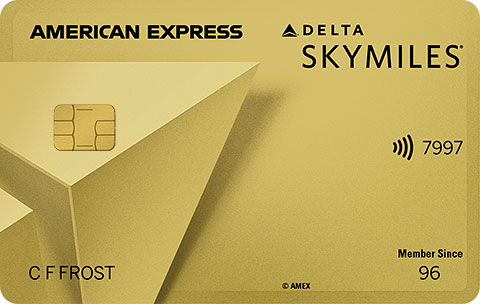
Good/Excellent
Intro APR
Purchases: N/A
Balance Transfers: N/A
APR
19.74%-28.74% Variable
Rewards Earn 2X Miles on Delta purchases, at U.S. Supermarkets and at restaurants worldwide, including takeout and delivery in the U.S. Earn 1X Mile on all other eligible purchases.
1X-2X Miles
Annual Fee
$0 introductory annual fee for the first year, then $150.
Welcome Offer Earn 50,000 Bonus Miles after you spend $2,000 in eligible purchases on your new Card in your first 6 months of Card Membership.
50,000 Bonus Miles
-
A budget-friendly option for earning Delta miles. The benefits easily outweigh the annual fee if you fly with Delta regularly.
-
- Welcome offer
- Free checked bag
- Priority boarding
- Earn a Flight Credit
- Annual fee
- No premium travel benefits
-
- Earn 50,000 Bonus Miles after you spend $2,000 in eligible purchases on your new Card in your first 6 months of Card Membership.
- Enjoy a $0 introductory Annual Fee for the first year, then $150.
- Delta SkyMiles® Gold American Express Card Members get 15% off when using miles to book Award Travel on Delta flights through delta.com and the Fly Delta app. Discount not applicable to partner-operated flights or to taxes and fees.
- $200 Delta Flight Credit: After you spend $10,000 in purchases on your Card in a calendar year, you can receive a $200 Delta Flight Credit to use toward future travel.
- When you use your Delta SkyMiles® Gold American Express Card, you can earn: 2X miles on Delta Purchases, 2X miles at restaurants, 2X miles at U.S. supermarkets, 1X miles on all other eligible purchases. Every mile you earn brings you closer to the places you want to go. Turn them into your next trip, use them for seat upgrades, and more.
- Enjoy your first checked bag free on Delta flights and save up to $70 per person on a round-trip Delta flight.
- Receive Zone 5 Priority Boarding on Delta flights; board early, stow your carry-on bag and settle in sooner.
- $100 Delta Stays Credit: Get up to $100 back per year as a statement credit after using your Delta SkyMiles® Gold American Express Card to book prepaid hotels or vacation rentals through Delta Stays on delta.com.
- Want even more flexibility? Take up to $50 off the cost of your flight for every 5,000 miles you redeem with Pay with Miles when you book on delta.com.
- Receive a 20% savings in the form of a statement credit on eligible Delta in-flight purchases after using your Card.
- No Foreign Transaction Fees. Enjoy international travel without additional fees on purchases made abroad.
- With Send & Split®, you can send money and split your Card purchases with any other Venmo or PayPal user, directly from the Amex App. Enroll today.
- Apply with confidence. Know if you're approved for a Card with no impact to your credit score. If you're approved and you choose to accept this Card, your credit score may be impacted.
- Terms Apply.
Good/Excellent (670-850)
Intro APR 0% intro APR for 12 months from account opening on purchases and qualifying balance transfers
Purchases: 0% intro APR for 12 months from account opening on purchases
Balance Transfers: 0% intro APR for 12 months from account opening on qualifying balance transfers
Regular APR
18.74%, 24.74%, or 28.74% Variable APR
Rewards Earn unlimited 2% cash rewards on purchases.
2% cash rewards
Annual Fee
$0
Welcome Offer Earn a $200 cash rewards bonus after spending $500 in purchases in the first 3 months.
$200 cash rewards
-
This card’s unlimited 2% cash rewards on purchases is the highest we’ve seen for a flat-rate rewards card with no annual fee. It also has an incredibly easy-to-earn $200 welcome bonus after spending $500 in purchases in the first 3 months. The intro APR is decent too -- 0% intro APR for 12 months from account opening on purchases and qualifying balance transfers (18.74%, 24.74%, or 28.74% Variable APR applies after). We simply haven’t come across this combination of top perks in one card before.
Read Full Review -
- Unlimited 2% cash rewards
- Long 0% intro APR offer
- Generous cash rewards welcome bonus
- No annual fee
- Cellphone protections
- No bonus categories
- Foreign transaction fees
- Balance transfer fee
-
- Apply Now to take advantage of this offer and learn more about product features, terms and conditions.
- Earn a $200 cash rewards bonus after spending $500 in purchases in the first 3 months.
- Earn unlimited 2% cash rewards on purchases.
- 0% intro APR for 12 months from account opening on purchases and qualifying balance transfers. 18.74%, 24.74%, or 28.74% variable APR thereafter; balance transfers made within 120 days qualify for the intro rate and fee of 3% then a BT fee of up to 5%, min: $5.
- $0 annual fee.
- No categories to track or remember and cash rewards don’t expire as long as your account remains open.
- Find tickets to top sports and entertainment events, book travel, make dinner reservations and more with your complimentary 24/7 Visa Signature® Concierge.
- Up to $600 of cell phone protection against damage or theft. Subject to a $25 deductible.
On Bank of America's Secure Website.
On Bank of America's Secure Website.
Earn 6% cash back in the category of your choice -- like dining, travel, or online shopping -- for the first year. Plus, score a $200 cash rewards bonus after qualifying purchases.
Good/Excellent (670-850)
Intro APR 0% Intro APR for 15 billing cycles for purchases, and for any balance transfers made in the first 60 days. After the Intro APR offer ends, a Variable APR that’s currently 17.74% - 27.74% will apply. A 3% Intro balance transfer fee will apply for the first 60 days your account is open. After the Intro balance transfer fee offer ends, the fee for future balance transfers is 4%. Balance transfers may not be used to pay any account provided by Bank of America.
Purchases: 0% Intro APR for 15 billing cycles for purchases
Balance Transfers: 0% Intro APR for 15 billing cycles for any balance transfers made in the first 60 days
Regular APR
17.74% - 27.74% (Variable)
Rewards Earn 6% cash back for the first year in the category of your choice, 2% cash back at grocery stores and wholesale clubs, and unlimited 1% cash back on all other purchases. Earn 6% and 2% cash back on the first $2,500 in combined purchases each quarter in the choice category, and at grocery stores and wholesale clubs, then earn unlimited 1% thereafter. After the first year from account opening, you’ll earn 3% cash back on purchases in your choice category and 2% cash back at grocery stores and wholesale clubs up to the quarterly maximum.
1% - 6% cash back
Annual Fee
$0
Welcome Offer $200 online cash rewards bonus after you make at least $1,000 in purchases in the first 90 days of account opening
$200 cash back
-
This card's wide range of extra cash back options speaks for itself, with a choice of six bonus categories you can change monthly for 6% earnings for the first year in the category of your choice. And you can earn 2% back automatically at grocery stores and wholesale clubs. No annual fee and a nice welcome bonus also make this one a winner. Plus, if you're a Bank of America Preferred Rewards member, this card will be even more valuable for you.
Read Full Review -
- Competitive welcome bonus
- Bonus cash back in a category of your choice
- No annual fee
- Great intro & transfer APR offer
- Relationship rewards bonus
- Foreign transaction fee
- Limit on bonus cash back
-
- New offer! Earn 6% cash back for the first year in the category of your choice: gas and EV charging stations; online shopping, including cable, internet, phone plans and streaming; dining; travel; drug stores and pharmacies; or home improvement and furnishings. You’ll automatically earn 2% cash back at grocery stores and wholesale clubs, and unlimited 1% cash back on all other purchases. After the first year from account opening, you’ll earn 3% cash back on purchases in your choice category.
- Earn 6% and 2% cash back on the first $2,500 in combined purchases each quarter in the choice category, and at grocery stores and wholesale clubs, then earn unlimited 1% thereafter. After the 3% first-year bonus offer ends, you will earn 3% and 2% cash back on these purchases up to the quarterly maximum.
- $200 online cash rewards bonus after you make at least $1,000 in purchases in the first 90 days of account opening.
- With the Bank of America Preferred Rewards® program, members can earn 25%-75% more cash back on every purchase. That means the 3% choice category could go up to 3.75%-5.25%. The Preferred Rewards bonus is not applied to the 3% first-year bonus.
- No annual fee and cash rewards don’t expire as long as your account remains open.
- 0% Intro APR for 15 billing cycles for purchases, and for any balance transfers made in the first 60 days. After the Intro APR offer ends, a Variable APR that’s currently 17.74% - 27.74% will apply. A 3% Intro balance transfer fee will apply for the first 60 days your account is open. After the Intro balance transfer fee offer ends, the fee for future balance transfers is 4%. Balance transfers may not be used to pay any account provided by Bank of America.
- Contactless Cards - The security of a chip card, with the convenience of a tap.
- This online only offer may not be available if you leave this page or if you visit a Bank of America financial center. You can take advantage of this offer when you apply now.
On American Express' Secure Website.
Terms apply
On American Express' Secure Website.
Terms apply
Good/Excellent
Intro APR
Purchases: 0% on purchases, 12 months
Balance Transfers: 0%, 12 months
APR
19.74%-28.74% Variable
Rewards Earn 6% cash back at U.S. supermarkets on up to $6,000 per year in eligible purchases (then 1%), 6% cash back on select U.S. streaming subscriptions, 3% cash back at eligible U.S. gas stations and on transit (including taxis/rideshare, parking, tolls, trains, buses and more) purchases and 1% cash back on other purchases. Cash Back is received in the form of Reward Dollars that can be redeemed as a statement credit and at Amazon.com checkout.
1%-6% Cash Back
Annual Fee
$0 intro annual fee for the first year, then $95.
Welcome Offer Earn a $250 statement credit after you spend $3,000 in eligible purchases on your new Card within the first 6 months.
$250
-
This card is a smart choice for earning top-tier rewards on everyday purchases. It features a market-leading rate of a whopping 6% cash back at U.S. supermarkets (on up to $6,000 per year), 6% on select U.S. streaming services, and 3% on U.S. gas and transit. Plus, there’s a strong welcome offer: Earn a $250 statement credit after spending $3,000 in the first 6 months. With 0% intro APR on purchases and balance transfers for the first 12 months and $0 annual fee for the first year (then $95), it’s one of our favorite credit cards for a reason. Terms apply.
Read Full Review -
- Big welcome offer
- U.S. supermarkets rewards
- U.S. gas stations rewards
- Streaming subscription rewards
- Annual fee
- Foreign transaction fee
-
- Earn a $250 statement credit after you spend $3,000 in eligible purchases on your new Card within the first 6 months.
- $0 intro annual fee for the first year, then $95.
- Low Intro APR: 0% intro APR on purchases and balance transfers for 12 months from the date of account opening. After that, your APR will be a variable APR of 19.74% - 28.74%.
- Plan It®: Buy now, pay later with Plan It. Split purchases of $100 or more into equal monthly installments with a fixed fee so you don’t have the pressure of paying all at once. Simply select the purchase in your online account or the American Express® App to see your plan options. Plus, you’ll still earn rewards on purchases the way you usually do.
- Earn 6% cash back at U.S. supermarkets on up to $6,000 per year in eligible purchases (then 1%), 6% cash back on select U.S. streaming subscriptions, 3% cash back at eligible U.S. gas stations and on transit (including taxis/rideshare, parking, tolls, trains, buses and more) purchases and 1% cash back on other purchases. Cash Back is received in the form of Reward Dollars that can be redeemed as a statement credit and at Amazon.com checkout.
- Get up to a $10 monthly statement credit after using your enrolled Blue Cash Preferred® Card for a subscription purchase, including a bundle subscription purchase, at disneyplus.com, Hulu.com, or Plus.espn.com U.S. websites. Subject to auto-renewal.
- Apply with confidence. Know if you're approved for a Card with no impact to your credit score. If you're approved and you choose to accept this Card, your credit score may be impacted.
- Terms Apply.
Good/Excellent
Intro APR
Purchases: N/A
Balance Transfers: N/A
APR
See Pay Over Time APR
Rewards • Earn 4X Membership Rewards® points per dollar spent on purchases at restaurants worldwide, on up to $50,000 in purchases per calendar year, then 1X points for the rest of the year. • Earn 4X Membership Rewards® points per dollar spent at US supermarkets, on up to $25,000 in purchases per calendar year, then 1X points for the rest of the year. • Earn 3X Membership Rewards® points per dollar spent on flights booked directly with airlines or on AmexTravel.com. • Earn 2X Membership Rewards® points per dollar spent on prepaid hotels and other eligible purchases booked on AmexTravel.com. • Earn 1X Membership Rewards® point per dollar spent on all other eligible purchases.
1X-4X Membership Rewards® Points
Annual Fee
$325
Welcome Offer You may be eligible for as high as 100,000 Membership Rewards® Points after spending $6,000 in eligible purchases on your new Card in your first 6 months of Membership. Welcome offers vary and you may not be eligible for an offer.
As High As 100,000 points. Find Out Your Offer.
-
This card offers considerable value, as it earns 4X points at U.S. supermarkets (on up to $25,000 in purchases per calendar year, then 1X) and 4X points at restaurants worldwide (on up to $50,000 in purchases per calendar year, then 1X). Plus, earn 3X points on flights booked directly with airlines or on AmexTravel.com. Meanwhile, the value of its annual benefits can potentially offset its entire annual fee. (Terms apply.) Overall, it’s an incredibly lucrative card for those who spend a lot in its bonus categories and can use its spend credits.
Read Full Review -
- Impressive welcome offer
- Restaurant rewards
- U.S. supermarket rewards
- Travel and dining credits
- High-value rewards points
- Annual fee
- Inflexible spending credits
-
- You may be eligible for as high as 100,000 Membership Rewards® Points after you spend $6,000 in eligible purchases on your new Card in your first 6 months of Card Membership. Welcome offers vary and you may not be eligible for an offer. Apply to know if you’re approved and find out your exact welcome offer amount – all with no credit score impact. If you’re approved and choose to accept the Card, your score may be impacted.
- Earn 4X Membership Rewards® points per dollar spent on purchases at restaurants worldwide, on up to $50,000 in purchases per calendar year, then 1X points for the rest of the year.
- Earn 4X Membership Rewards® points per dollar spent at US supermarkets, on up to $25,000 in purchases per calendar year, then 1X points for the rest of the year.
- Earn 3X Membership Rewards® points per dollar spent on flights booked directly with airlines or on AmexTravel.com.
- Earn 2X Membership Rewards® points per dollar spent on prepaid hotels and other eligible purchases booked on AmexTravel.com.
- Earn 1X Membership Rewards® point per dollar spent on all other eligible purchases.
- $120 Uber Cash on Gold: Add your Gold Card to your Uber account and get $10 in Uber Cash each month to use on orders and rides in the U.S. when you select an American Express Card for your transaction. That’s up to $120 Uber Cash annually. Plus, after using your Uber Cash, use your Card to earn 4X Membership Rewards® points for Uber Eats purchases made with restaurants or U.S. supermarkets. Point caps and terms apply.
- $84 Dunkin' Credit: With the $84 Dunkin' Credit, you can earn up to $7 in monthly statement credits after you enroll and pay with the American Express® Gold Card at U.S. Dunkin' locations. Enrollment is required to receive this benefit.
- $100 Resy Credit: Get up to $100 in statement credits each calendar year after you pay with the American Express® Gold Card to dine at U.S. Resy restaurants or make other eligible Resy purchases. That's up to $50 in statement credits semi-annually. Enrollment required.
- $120 Dining Credit: Satisfy your cravings, sweet or savory, with the $120 Dining Credit. Earn up to $10 in statement credits monthly when you pay with the American Express® Gold Card at Grubhub, The Cheesecake Factory, Goldbelly, Wine.com, and Five Guys. Enrollment required.
- Explore over 1,000 upscale hotels worldwide with The Hotel Collection and receive a $100 credit towards eligible charges* with every booking of two nights or more through AmexTravel.com. *Eligible charges vary by property.
- No Foreign Transaction Fees.
- Annual Fee is $325.
- Terms Apply.
On American Express' Secure Website.
Terms apply
On American Express' Secure Website.
Terms apply
Good/Excellent
Intro APR
Purchases: 0% on purchases, 15 months
Balance Transfers: 0%, 15 months
APR
19.74%-28.74% Variable
Rewards Earn 3% cash back at U.S. supermarkets, 3% cash back on U.S. online retail purchases, 3% cash back at U.S. gas stations, on eligible purchases for each category on up to $6,000 per year in purchases (then 1%). Cash back is received in the form of Reward Dollars that can be redeemed as a statement credit and at Amazon.com checkout.
1%-3% cash back
Annual Fee
$0
Welcome Offer Earn a $200 statement credit after you spend $2,000 in purchases on your new Card within the first 6 months.
$200
-
If gas and groceries are big line items in your budget, don't miss this card. You won't pay an annual fee, and you can earn a generous 3% cash back at U.S. supermarkets, U.S. online retail purchases, and U.S. gas stations, on each category up to $6,000 per year in purchases. A 0% APR intro offer lasting 15 months and a $200 welcome bonus for a $2,000 spend inside of 6 months (terms apply) round out the perks on this Amex.
Read Full Review -
- U.S. supermarkets and online retail rewards
- U.S. gas stations cash back
- Big welcome offer
- No annual fee (see rates and fees)
- Foreign transaction fee
- High spend requirement for welcome offer
-
- Earn a $200 statement credit after you spend $2,000 in purchases on your new Card within the first 6 months.
- No Annual Fee.
- Enjoy 0% intro APR on purchases and balance transfers for 15 months from the date of account opening. After that, 19.74% to 28.74% variable APR.
- Plan It®: Buy now, pay later with Plan It. Split purchases of $100 or more into equal monthly installments with a fixed fee so you don’t have the pressure of paying all at once. Simply select the purchase in your online account or the American Express® App to see your plan options. Plus, you’ll still earn rewards on purchases the way you usually do.
- Earn 3% cash back at U.S. supermarkets, 3% cash back on U.S. online retail purchases, 3% cash back at U.S. gas stations, on eligible purchases for each category on up to $6,000 per year in purchases (then 1%). Cash back is received in the form of Reward Dollars that can be redeemed as a statement credit and at Amazon.com checkout.
- Get up to a $7 monthly statement credit after using your enrolled Blue Cash Everyday® Card for a subscription purchase, including a bundle subscription purchase, at Disneyplus.com, Hulu.com, or Plus.espn.com U.S. websites. Subject to auto-renewal.
- Apply with confidence. Know if you're approved for a Card with no impact to your credit score. If you're approved and you choose to accept this Card, your credit score may be impacted.
- Terms Apply.
Good/Excellent (670-850)
Intro APR 0% intro APR for 12 months from account opening on purchases
Purchases: 0% intro APR for 12 months from account opening on purchases
Balance Transfers: N/A
Regular APR
18.74%, 24.74%, or 28.74% Variable APR
Rewards Earn unlimited 3X points on restaurants, travel, gas stations, transit, popular streaming services and phone plans. Plus earn 1X points on other purchases.
1X-3X points
Annual Fee
$0
Welcome Offer Earn 20,000 bonus points when you spend $1,000 in purchases in the first 3 months - that's a $200 cash redemption value.
20,000 bonus points
-
This card offers unlimited 3X points on common things like restaurants, gas stations, travel, transit, popular streaming services, and phone plans. Plus, earn 1X points on other purchases. This could be a great pick if you spend a lot in those categories. A solid welcome bonus and cell phone protection are the cherries on top.
-
- Strong welcome bonus for a no annual fee card
- Earn Unlimited 3x points on useful categories
- Cellphone protection
- Other cards offer larger bonuses, though they usually come with annual fees
- The 1x points baseline rewards rate on other purchases, though normal for this type of card, can be beat
-
- Apply Now to take advantage of this offer and learn more about product features, terms and conditions.
- Earn 20,000 bonus points when you spend $1,000 in purchases in the first 3 months - that's a $200 cash redemption value.
- Earn unlimited 3X points on the things that really add up - like restaurants, travel, gas stations, transit, popular streaming services, and phone plans. Plus, earn 1X points on other purchases.
- $0 annual fee.
- 0% intro APR for 12 months from account opening on purchases. 18.74%, 24.74%, or 28.74% variable APR thereafter.
- Up to $600 of cell phone protection against damage or theft. Subject to a $25 deductible.
- Redeem your rewards points for travel, gift cards, or statement credits. Or shop at millions of online stores and redeem your rewards when you check out with PayPal.
- Find tickets to top sports and entertainment events, book travel, make dinner reservations and more with your complimentary 24/7 Visa Signature® Concierge.
Good/Excellent (670-850)
Intro APR
Purchases: N/A
Balance Transfers: N/A
Regular APR
19.74% - 27.74% (Variable)
Rewards 10x on Hotels, Car Rentals, and Attractions booked through CitiTravel.com. Earn 3 Points per $1 spent on Air Travel and Other Hotel Purchases. Earn 3 Points per $1 spent on Restaurants. Earn 3 Points per $1 spent on Supermarkets. Earn 3 Points per $1 spent on Gas and EV Charging Stations. Earn 1 Point per $1 spent on All Other Purchases
1x - 10x points
Annual Fee
$95
Welcome Offer Earn 60,000 bonus ThankYou® Points after spending $4,000 in the first 3 months of account opening, redeemable for $600 in gift cards or travel rewards at thankyou.com.
60,000 ThankYou® Points
-
Citi Strata Premier offers a unique combination of bonus categories we don't see on many travel cards. It earns 3X points on travel and everyday-type categories, including supermarkets and gas/EV charging. You can also earn a welcome bonus worth $600. That combination of rewards is an excellent value for a relatively low annual fee. Plus, if you run into any problems on a trip, its complimentary travel protections (including coverage for trip delays, trip cancellations and interruptions, and lost/damaged luggage) could save the day.
-
- Big sign-up bonus
- Annual hotel savings offer
- Travel and dining rewards
- Grocery and gas rewards
- Flexible travel rewards points
- Travel insurance protections
- Annual fee
- Redemption options
-
- Earn 60,000 bonus ThankYou® Points after spending $4,000 in the first 3 months of account opening, redeemable for $600 in gift cards or travel rewards at thankyou.com.
- Earn 10 Points per $1 spent on Hotels, Car Rentals, and Attractions booked on CitiTravel.com.
- Earn 3 Points per $1 on Air Travel and Other Hotel Purchases, at Restaurants, Supermarkets, Gas and EV Charging Stations.
- Earn 1 Point per $1 spent on all other purchases
- $100 Annual Hotel Benefit: Once per calendar year, enjoy $100 off a single hotel stay of $500 or more (excluding taxes and fees) when booked through CitiTravel.com. Benefit applied instantly at time of booking.
- No expiration and no limit to the amount of points you can earn with this card
- No Foreign Transaction Fees on purchases
Ink Business Unlimited® Credit Card
Great for: Competitive welcome bonus
Earn $750 cash back when you spend $6,000 in the first 3 months. Don’t miss your shot at one of the biggest Ink Unlimited bonuses we’ve seen.
Good/Excellent (670-850)
Intro APR 0% Intro APR on Purchases
Purchases: 0% Intro APR on Purchases, 12 months
Balance Transfers: N/A
Regular APR
17.24% - 25.24% Variable
Rewards Earn unlimited 1.5% cash back on every purchase made for your business. Earn 5% total cash back on Lyft rides through 9/30/27.
Earn unlimited 1.5% cash back on every purchase
Annual Fee
$0
Welcome Offer Earn $750 bonus cash back after you spend $6,000 on purchases in the first 3 months from account opening.
Earn $750 bonus cash back
-
This is one of the easiest ways to turn business spending into real cash back. Earn unlimited 1.5% on every purchase, plus a limited-time $750 welcome bonus to boost your rewards right away. With no annual fee, 0% intro APR for 12 months on purchases, and free employee cards, it’s a low-maintenance card that delivers big value from day one.
Read Full Review -
- Big cash back sign-up bonus
- Competitive cash back rate
- Great intro APR
- No annual fee
- Free employee cards
- No bonus categories
- Foreign transaction fee
-
- Earn $750 bonus cash back after you spend $6,000 on purchases in the first 3 months from account opening
- Earn unlimited 1.5% cash back on every purchase made for your business
- No Annual Fee
- Redeem rewards for cash back, gift cards, travel and more through Chase Ultimate Rewards®.
- Earn rewards faster with employee cards at no additional cost. Set individual spending limits for greater control.
- Round-the-clock monitoring for unusual credit card purchases
- With Zero Liability you won't be held responsible for unauthorized charges made with your card or account information.
- 0% introductory APR for 12 months on purchases
- Earn 5% total cash back on Lyft rides through 9/30/27.
- Member FDIC
Capital One Spark Cash
Great for: Cash Back on Everyday Business Expenses
Excellent (740-850)
Intro APR
Purchases: N/A
Balance Transfers: N/A
Regular APR
24.99% (Variable)
Rewards Earn unlimited 2% cash back for your business on every purchase, everywhere, no limits or category restrictions
2% cash back
Annual Fee
$0 intro for first year; $95 after that
Welcome Offer Earn $1,000 Cash Back once you spend $10,000 in the first 3 months from account opening
Earn $1,000 Cash Back
-
This card is made for business owners who want cash back – plain and simple. With unlimited 2% cash back on every purchase, there are no rotating categories, no limits, and rewards won't expire for the life of the account. Add in a $1,000 cash back welcome offer and a $0 annual fee the first year ($95 after), and you’ve got a straightforward, high-earning card that turns everyday business spending into real cash rewards.
Read Full Review -
- Big sign-up bonus
- Unlimited 2% cash back
- No foreign transaction fees
- Annual fee after the first year
- No intro APR offer
-
- Earn a $1,000 cash bonus when you spend $10,000 within 3 months of account opening
- For businesses that want to earn 2% cash back on all purchases with the familiarity of a traditional credit line
- Earn unlimited 2% cash back for your business on every purchase, everywhere, no limits or category restrictions
- $0 annual fee for the first year; $95 after that
- Free employee cards, which also earn unlimited 2% cash back on all purchases
- Rewards won’t expire for the life of the account, and you can redeem your cash back for any amount
- No foreign transaction fees
Capital One Spark Cash Plus
Great for: Businesses with large monthly expenses
Excellent (740-850)
Intro APR
Purchases: N/A
Balance Transfers: N/A
Regular APR
N/A
Rewards Earn unlimited 2% cash back for your business on purchases, no limits or category restrictions; plus earn unlimited 5% cash back on hotels and rental cars booked through Capital One's travel booking site.
2% - 5% cash back
Annual Fee
$150
Welcome Offer $2,000 Cash Back once you spend $30,000 in the first 3 months. Earn an additional $2,000 cash bonus for every $500K spent during the first year
$2,000 Cash Back
-
This card is built for businesses with significant expenses that want high-value rewards. You’ll earn unlimited 2% cash back on every purchase, plus earn unlimited 5% cash back on hotels and rental cars booked through Capital One's travel booking site. If you spend over $150k annually, your annual fee will be refunded, and we love that in your first year alone, you could earn over $4,000 in cash bonuses.
-
- Big welcome offer
- 2% cash back
- Free employee credit cards
- No foreign transaction fee
- Potential annual spending bonus
- Annual fee
- Pay-in-full card
- Personal guarantee
-
- Earn a one-time cash bonus of $2,000 once you spend $30,000 in the first 3 months
- Earn an additional $2,000 cash bonus for every $500K spent during the first year. You can earn this bonus multiple times over the course of year 1!
- Earn unlimited 2% cash back on every purchase, everywhere—with no limits or category restrictions
- Enjoy big purchasing power so you can spend more and earn more rewards. The Spark Cash Plus card has no preset spending limit, so it can adapt to your needs based on your spending behavior, payment history, credit profile and other factors
- Earn unlimited 5% cash back on hotels and rental cars booked through Capital One's travel booking site
- Streamline your accounts payable process, employee spending, and more from your online account with free business management tools
- Empower your teams to make business purchases while you earn rewards from their transactions with free employee and virtual cards
- $150 annual fee - Spend $150,000 annually and Capital One will refund this fee every year
- Spark Cash Plus has no APR because your balance is due in full every month
- For businesses that need large spending capacity and want to maximize cash back
Ink Business Preferred® Credit Card
Great for: Business Travel
Good/Excellent (670-850)
Intro APR N/A
Purchases: N/A
Balance Transfers: N/A
Regular APR
19.99% - 25.99% Variable
Rewards Earn 3 points per $1 on the first $150,000 spent in combined purchases on travel, shipping purchases, Internet, cable and phone services, advertising purchases made with social media sites and search engines each account anniversary year. Earn 1 point per $1 on all other purchases-with no limit to the amount you can earn.
Earn 3 points per $1 in select business categories
Annual Fee
$95
Welcome Offer Earn 90,000 bonus points after you spend $8,000 on purchases in the first 3 months from account opening.
Earn 90,000 bonus points
-
This card offers excellent earning potential for businesses looking to earn valuable rewards on everyday expenses. You’ll earn 3X points on travel, shipping, and advertising purchases (up to $150,000 per year), making it a great fit for businesses that invest in growth. With an impressive 90,000-point welcome bonus and access to the Chase Ultimate Rewards® ecosystem, this card helps you maximize rewards. Plus, we like that points are worth more when redeemed for travel through Chase Travel℠, further boosting the card’s value.
Read Full Review -
- Huge sign-up bonus
- Advertising rewards
- Shipping rewards
- Cell phone protection
- Flexible travel points
- Card perks
- Annual fee
- No intro APR offer
- Spending minimum for sign-up bonus
-
- Earn 90k bonus points after you spend $8,000 on purchases in the first 3 months from account opening. That's $900 cash back or $1,125 toward travel when redeemed through Chase Travel℠
- Earn 3 points per $1 on the first $150,000 spent on travel and select business categories each account anniversary year. Earn 1 point per $1 on all other purchases
- Round-the-clock monitoring for unusual credit card purchases
- With Zero Liability you won't be held responsible for unauthorized charges made with your card or account information.
- Redeem points for cash back, gift cards, travel and more - your points don't expire as long as your account is open
- Points are worth more when you redeem for travel through Chase Travel℠
- Purchase Protection covers your new purchases for 120 days against damage or theft up to $10,000 per claim and $50,000 per account.
- Member FDIC
Capital One Spark Miles for Business
Great for: Travel Rewards on Everyday Business Expenses
Excellent (740-850)
Intro APR
Purchases: N/A
Balance Transfers: N/A
Regular APR
24.99% (Variable)
Rewards Earn unlimited 2X miles per dollar on every purchase, everywhere, no limits or category restrictions, and miles won't expire for the life of the account. Unlimited 5X miles on hotels, vacation rentals and rental cars booked through Capital One's travel booking site.
2X-5X miles
Annual Fee
$0 intro for first year; $95 after that
Welcome Offer 50,000 Miles once you spend $4,500 on purchases within 3 months from account opening
50,000 Miles
-
Simple travel rewards, low fees, and no fuss. This card makes it easy for business owners to start earning with unlimited 2X miles on every purchase, a 50,000-mile welcome bonus, and 5X on on hotels, vacation rentals and rental cars booked through Capital One's travel booking site. With a $0 intro annual fee for the first year ($95 after), it’s an easy way for businesses to turn everyday spending into meaningful travel rewards.
-
- Big sign-up bonus
- Unlimited 2x miles
- No foreign transaction fee
- Multiple ways to use miles
- Annual fee
- No intro APR offer
-
- Earn a one-time bonus of 50,000 miles – equal to $500 in travel – once you spend $4,500 on purchases within the first 3 months from account opening
- Earn unlimited 2X miles per dollar on every purchase, everywhere, no limits or category restrictions, and miles won't expire for the life of the account
- Unlimited 5X miles on hotels, vacation rentals and rental cars booked through Capital One's travel booking site
- Transfer your miles to 15+ travel loyalty programs
- Redeem your miles instantly for any travel-related purchases, from flights and hotels to ride-sharing services
- Receive up to a $120 credit for Global Entry or TSA PreCheck®
- $0 intro annual fee for the first year; $95 after that
- Free employee cards which also earn unlimited 2X miles from their purchases
Capital One Venture X Business
Great for: Premium business travel
New cardholders can earn up to 400k bonus miles — equal to $4,000 in travel value. Earn 200k miles after spending $30k in the first 3 months, and another 200k miles after spending $150k in the first 6 months.
Excellent (740-850)
Intro APR
Purchases: N/A
Balance Transfers: N/A
Regular APR
N/A
Rewards Earn unlimited 2X miles on every purchase, everywhere—with no limits or category restrictions. Earn 10X miles on hotels and rental cars and 5X miles on flights and vacation rentals booked through Capital One Business Travel
2X-10X miles
Annual Fee
$395
Welcome Offer LIMITED-TIME OFFER: Earn up to 400K bonus miles: 200K miles when you spend $30K in the first 3 months, and an additional 200k miles when you spend $150k in the first 6 months
400,000 bonus miles (worth $4,000 in travel)
-
For businesses looking to earn rewards while enjoying premium travel benefits, we think this card strikes a strong balance between value and simplicity. It offers unlimited 2X miles on every purchase, along with 10X miles on hotels and rental cars booked through Capital One Business Travel. With top-tier perks like unlimited lounge access, annual travel credits, and flexible redemption options, this card is designed for business owners who prioritize travel rewards. It’s an excellent option for companies seeking both rewards and premium travel perks without the hassle.
-
- Huge travel rewards bonus
- High rewards rate
- Travel credits
- Useful business management tools
- Spending requirement for sign-up bonus
- Annual fee
- Pay-in-full card
-
- LIMITED-TIME OFFER: Earn up to 400K bonus miles: 200K miles when you spend $30K in the first 3 months, and an additional 200k miles when you spend $150k in the first 6 months
- Earn unlimited 2X miles on every purchase, everywhere—with no limits or category restrictions
- Earn 10X miles on hotels and rental cars and 5X miles on flights and vacation rentals booked through Capital One Business Travel
- With no preset spending limit, enjoy big purchasing power that adapts so you can spend more and earn more rewards
- Empower your teams to make business purchases while earning rewards on their transactions, with free employee and virtual cards. Plus, automatically sync your transaction data with your accounting software and pay your vendors with ease
- Redeem your miles on flights, hotels and more. Plus, transfer your miles to any of the 15+ travel loyalty programs
- Every year, you'll get 10,000 bonus miles after your account anniversary date. Plus, receive an annual $300 credit for bookings made through Capital One Business Travel
- Receive up to a $120 credit for Global Entry or TSA PreCheck®. Enjoy access to 1,300+ airport lounges worldwide, including Capital One Lounge locations and Priority Pass™ lounges, after enrollment
- Enjoy a $100 experience credit and other premium benefits with every hotel and vacation rental booked from the Premier Collection
- This is a pay-in-full card, so your balance is due in full every month
The Business Platinum Card® from American Express
Great for: Business Travel
On American Express's Secure Website.
On American Express's Secure Website.
Good/Excellent
Intro APR
Purchases: N/A
Balance Transfers: N/A
Regular APR
17.99% - 28.74% Variable
Rewards • 5X points on flights and prepaid hotels booked on AmexTravel.com • 2X points on purchases at U.S. construction material & hardware suppliers, electronic goods retailers and software & cloud system providers, and shipping providers, as well as on each eligible purchase of $5,000 or more, up to $2 million of these purchases per calendar year. Purchases eligible for multiple additional point bonuses will only receive the highest eligible bonus. • 1X points on other eligible purchases
1X - 5X points
Annual Fee
$895
Welcome Offer Elevated Welcome Offer: Earn 200,000 Membership Rewards® points after you spend $20,000 in eligible purchases on the Business Platinum Card® within the first 3 months of Card Membership.
200,000 Membership Rewards® points
-
If business travel is a priority, this card brings premium rewards and perks. Earn 5X points on flights and prepaid hotels booked on AmexTravel.com, plus an enhanced 2X on eligible purchases of $5,000 or more. With access to 1,400+ lounges, annual travel credits, and TSA PreCheck/Global Entry fee credit, frequent flyers can easily offset the $895 fee and enjoy more comfort on the road. (Terms apply.)
-
- Versatile rewards points
- Huge welcome offer
- Airport lounge access
- Complimentary elite statuses
- Tons of statement credits
- High annual fee
-
- Elevated Welcome Offer: Earn 200,000 Membership Rewards® points after you spend $20,000 in eligible purchases on the Business Platinum Card® within the first 3 months of Card Membership.
- The American Express Global Lounge Collection® can provide an escape at the airport. With complimentary access to more than 1,550 airport lounges across 140 countries and counting, you have more airport lounge options than any other credit card company on the market as of 07/2025.
- See how you can unlock over $3,500 in business and travel value annually after meeting qualifying spend thresholds on the Business Platinum Card. Terms apply.
- New! Get up to $300 in statement credits semi-annually for up to a total of $600 in statement credits per calendar year on prepaid Fine Hotels + Resorts® or The Hotel Collection bookings through American Express Travel using the Business Platinum Card®. The Hotel Collection requires a minimum two-night stay.
- No Preset Spending Limit: The spending limit on the Business Platinum Card is flexible, so unlike a traditional credit card with a set limit, the amount you can spend adapts based on factors such as your purchase, payment and credit history.
- Make the Business Platinum Card® work even harder for you. Hilton For Business members get up to $200 back per calendar year when you make an eligible purchase at Hilton properties across the globe. Benefit enrollment required.
- Fly like a pro with a $200 Airline Fee Credit. Select one qualifying airline to receive up to $200 back per year on baggage fees and other incidentals.
- Use the Business Platinum Card and get up to $209 back per calendar year on your CLEAR® Plus Membership (subject to auto-renewal).
- Maximize your time away with Fine Hotels + Resorts through Amex Travel™.
- New! Enroll and get up to $150 in statement credits on U.S purchases directly with Dell Technologies on the Business Platinum Card and an additional $1,000 statement credit after you spend $5,000 or more on that same Card per calendar year.
- New! Enroll and get a $250 statement credit after you spend $600 or more on U.S. purchases directly with Adobe per calendar year on the Business Platinum Card.
- Get up to $90 in statement credits quarterly for purchases with Indeed on the Business Platinum Card. That’s up to $360 back per year. Enrollment required.
- Get up to $10 in statement credits per month for wireless telephone service purchases made directly with a wireless provider in the U.S. on the Business Platinum Card. That’s up to $120 back per year. Enrollment required.
- Enhanced! 2X points on purchases at U.S. construction material & hardware suppliers, electronic goods retailers and software & cloud system providers, and shipping providers, as well as on each eligible purchase of $5,000 or more, up to $2 million of these purchases per calendar year. Purchases eligible for multiple additional point bonuses will only receive the highest eligible bonus.
- 5X points on flights and prepaid hotels on AmexTravel.com
- 1X points on other eligible purchases
- $895 Annual Fee.
- Terms Apply.
Excellent (740-850)
Intro APR
Purchases: N/A
Balance Transfers: N/A
Regular APR
18.99% - 26.99% (Variable)
Rewards Earn 5% cash back rewards on gas at Costco and earn 4% cash back on other eligible gas and electric vehicle (EV) charging purchases for the first $7,000 combined spend per year, and then 1% thereafter. 3% cash back on restaurants and eligible travel purchases and eligible travel, including Costco Travel. 2% cash back on all other purchases from Costco and Costco.com. 1% cash back on all other purchases.
1% - 5% back
Annual Fee N/A
$0
Welcome Offer
N/A
-
There aren't many business cards offering this much bonus cash back at the pump (and the charging station). It also earns high rates on travel, at restaurants, and at Costco, giving it a well-rounded set of bonus categories. Other benefits are limited, making this primarily a card for Costco loyalists and business owners who drive a lot.
-
- Gas and EV charging cash back
- Costco cash back
- Travel and dining cash back
- Purchase protections
- No foreign transaction fee
- No sign-up bonus
- No 0% intro APR offer
- Difficult cash back redemptions
-
- Discover the only business credit card designed exclusively for Costco members
- Earn 5% cash back rewards on gas at Costco and earn 4% cash back on other eligible gas and electric vehicle (EV) charging purchases for the first $7,000 combined spend per year, and then 1% thereafter.
- 3% cash back on restaurants and eligible travel purchases and eligible travel, including Costco Travel.
- 2% cash back on all other purchases from Costco and Costco.com
- 1% cash back on all other purchases
- No annual fee with your paid Costco membership and enjoy no foreign transaction fees on purchases
- Whether you're traveling for business or pleasure, enjoy no foreign transaction fees on purchases
- Receive an annual credit card reward certificate, which is redeemable for cash or merchandise at U.S. Costco warehouses, including Puerto Rico
Bank of America® Business Advantage Customized Cash Rewards Mastercard® credit card
Great for: Flexible Rewards You Can Tailor to Expenses
On Bank of America's Secure Website.
On Bank of America's Secure Website.
Excellent (740-850)
Intro APR 0% Introductory APR on purchases for your first 9 billing cycles. After the intro APR offer ends, a Variable APR that's currently 16.99% to 26.99% will apply.
Purchases: 0%, 9 billing cycles
Balance Transfers: N/A
Regular APR
16.99% - 26.99% (Variable)
Rewards 3% cash back in the category of your choice (for the first $50,000 in combined choice category/dining purchases each calendar year, 1% thereafter). 2% cash back on dining purchases (for the first $50,000 in combined choice category/dining purchases each calendar year, 1% thereafter). Unlimited 1% cash back on all other purchases.
1% - 3% cash back
Annual Fee
$0.00
Welcome Offer $300 online statement credit after you make at least $3,000 in purchases in the first 90 days of your account opening.
$300 cash back
-
If your biggest expenses change, this card adapts with you. Pick one category to earn 3% cash back, 2% at restaurants, and 1% everywhere else – then update your choice as your spending shifts. Add a $300 welcome bonus, no annual fee, and 0% Intro APR for 9 billing cycles on purchases (then 16.99% - 26.99% (Variable)), and you get tailored rewards with built-in savings.
-
- No annual fee
- High rewards rate
- Intro APR period for purchases
- Rotating bonus categories
- Credit worthiness requirements
- Foreign transaction fee
-
- Get a $300 online statement credit after you make at least $3,000 in purchases in the first 90 days of your account opening.
- Earn 3% cash back in the category of your choice: gas stations & EV charging stations (default), office supply stores, travel, TV/telecom & wireless, computer services or business consulting services, 2% cash back on dining purchases and 1% cash back on all other purchases.
- You'll earn 3% cash back on purchases in the category of your choice and 2% cash back on dining purchases on the first $50,000 in combined choice category/dining purchases each calendar year, 1% thereafter.
- You can earn up to 75% more cash back on every purchase, if you have a business checking account with Bank of America and qualify for Preferred Rewards for Business Platinum Honors tier. That means you could earn up to 5.25% cash back in your selected choice category and up to 3.5% cash back on dining purchases on the first $50,000 in those combined purchases each calendar year, and up to an unlimited 1.75% cash back on all other purchases.
- No annual fee.
- Choose how to redeem your cash rewards-as a deposit into your Bank of America® checking or savings account, as a card statement credit or as a check mailed to you. Cash rewards don’t expire as long as your account remains open.
- To change your choice category for future purchases, you must go to the Mobile Banking app or Business Advantage 360, our small business online banking. You can change it once each calendar month, or make no change and it stays the same.
- 0% Introductory APR on purchases for your first 9 billing cycles. After the intro APR offer ends, a Variable APR that's currently 16.99% to 26.99% will apply.
- Contactless Cards - The security of a chip card, with the convenience of a tap.
- This offer may not be available if you leave this page or visit our website. You can take advantage of this offer when you apply now.
The Blue Business® Plus Credit Card from American Express
Great for: Businesses with Moderate Spending
On American Express's Secure Website.
On American Express's Secure Website.
Good/Excellent
Intro APR
Purchases: 0% on purchases, 12 months from date of account opening
Balance Transfers: N/A
Regular APR
16.99% - 26.99% Variable
Rewards Earn 2X points on everyday business purchases such as office supplies or client dinners. 2X applies to the first $50,000 in purchases per year, 1 point per dollar thereafter. Terms and limitations apply.
1x - 2x points
Annual Fee
No annual fee
Welcome Offer Earn 15,000 Membership Rewards® points after you spend $3,000 in eligible purchases on the Card within your first 3 months of Card Membership.
15,000 Membership Rewards® points
-
This card is a strong fit for businesses with modest yearly expenses. Earn 2X Membership Rewards® points on your first $50,000 in purchases each year — one of the best flat-rate rewards you’ll find at that level of spend. After that, you’ll still earn 1X points, with no annual fee and flexible redemptions for cash, travel, or transfers to airline and hotel partners.
-
- Purchase rewards
- Welcome bonus
- Intro 0% APR offer
- No annual fee
- Foreign transaction fee
- Personal guarantee
-
- Earn 15,000 Membership Rewards® points after you spend $3,000 in eligible purchases on the Card within your first 3 months of Card Membership.
- 0.0% intro APR on purchases for 12 months from the date of account opening, then a variable rate, 16.99% - 26.99%, based on your creditworthiness and other factors at account opening. APR will not exceed 29.99%
- Earn 2X points on everyday business purchases such as office supplies or client dinners. 2X applies to the first $50,000 in purchases per year, 1 point per dollar thereafter. Terms and limitations apply.
- You’ve got the power to spend beyond your credit limit* with Expanded Buying Power. *The amount you can spend above your credit limit is flexible, so it adapts with your use of the Card, your payment history, credit record, financial resources known to us, and other factors. Just remember, the amount you can spend with Expanded Buying Power is not unlimited.
- No Annual Fee
- Terms Apply.
Capital One Spark 1% Classic Card
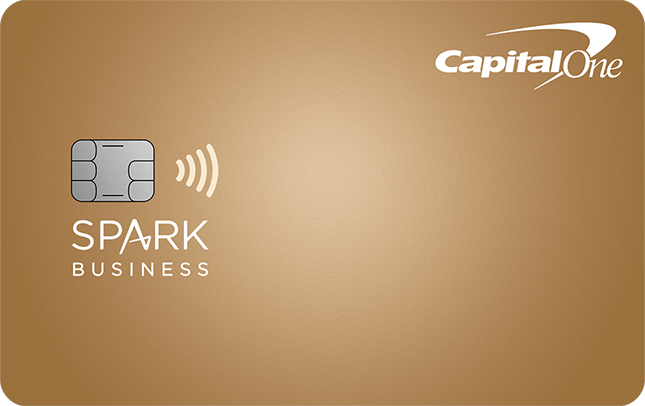
Fair/New to Credit Under(669)
Intro APR
Purchases: N/A
Balance Transfers: N/A
Regular APR
29.99%, variable
Rewards
1% cash back
Annual Fee
$0
Welcome Offer
N/A
-
For businesses or borrowers with fair credit, this card is a winner. Purchases earn unlimited 1% cash back, plus it includes a $0 annual fee. These perks are rare for cards in this credit score range.
-
- Flexible credit score requirements
- Cash back on purchases
- No annual fee
- No foreign transaction fee
- No rewards
- No intro APR offer
-
- Earn unlimited 1% cash back for your business on every purchase, everywhere, no limits or category restrictions. Plus, earn unlimited 5% cash back on hotels and rental cars booked through Capital One Travel.
- No annual fee
- Build and strengthen credit for your business by using this credit card responsibly
- $0 Fraud Liability if your card is lost or stolen
- Free employee cards, which also earn unlimited 1% cash back on purchases
- Rewards won't expire for the life of the account, and you can redeem your cash back for any amount
- No foreign transaction fees
At Motley Fool Money, every credit card we review is rated on a 5-star scale, scored to a tenth of a point. Our ratings weigh the features that matter most: rewards rates, 0% intro APR offers, welcome bonuses, fees, and perks like travel credits and purchase protections.
We score cards within four primary categories:
- 0% intro APR cards for paying down balances or financing purchases
- Travel cards for maximizing points, miles, and perks on the road
- Cash back and rewards cards for everyday spending value
- Business cards designed to fit company expenses and growth
Top-rated cards typically combine strong long-term value, attainable bonuses, low fees, and standout protections or perks.
We combine these factors with an evaluation of brand reputation and customer satisfaction to ensure you're getting the best credit card recommendations. Our aim is to maintain a balanced best-of list featuring top-scoring credit cards from reputable brands. 'Best for' category selections on this page are determined by our editors, and a single card may be recognized in multiple categories.
Ordering within lists is influenced by advertiser compensation, including featured placements at the top of a given list, but our product recommendations are NEVER influenced by advertisers. Learn more about how Motley Fool Money rates credit cards.
At Motley Fool Money, every credit card we review is rated on a 5-star scale, scored to a tenth of a point. Our ratings weigh the features that matter most: rewards rates, 0% intro APR offers, welcome bonuses, fees, and perks like travel credits and purchase protections.
We score cards within four primary categories:
- 0% intro APR cards for paying down balances or financing purchases
- Travel cards for maximizing points, miles, and perks on the road
- Cash back and rewards cards for everyday spending value
- Business cards designed to fit company expenses and growth
Top-rated cards typically combine strong long-term value, attainable bonuses, low fees, and standout protections or perks.
We combine these factors with an evaluation of brand reputation and customer satisfaction to ensure you're getting the best credit card recommendations. Our aim is to maintain a balanced best-of list featuring top-scoring credit cards from reputable brands. 'Best for' category selections on this page are determined by our editors, and a single card may be recognized in multiple categories.
Ordering within lists is influenced by advertiser compensation, including featured placements at the top of a given list, but our product recommendations are NEVER influenced by advertisers. Learn more about how Motley Fool Money rates credit cards.
Explore the best credit cards by category
How to choose the best credit card
The perfect credit card for Jack isn't the same one for Jill. Everyone's lifestyle, spending habits and priorities are a little different. So the best cards that match each person are different, too.
Here are a few things to reflect on to find your best fit:
- Your overall goals -- Start here. If you need a balance transfer card, don't get distracted by travel rewards. If you're after simple cash back, focus on cards that actually deliver it.
- Rewards fit -- Once you know your goal, match it to the right type of rewards (cash back, travel points, or flat-rate for everything cards).
- Spending habits -- Look at where your money actually goes each month and make sure it aligns with the highest rewards that a card offers.
- Annual fee -- Higher-fee cards can be worth it, but only if you'll actually use the perks.
- Intro APR -- Are you planning a large purchase or transferring a balance? Look for a 0% intro APR period that will allow you to accomplish your goals within the intro period.
- Welcome offer -- Big bonuses can be very lucrative, giving you an immediate return in the first year of ownership.
- Extra perks -- This could be like purchase protection, airport lounge access, or cellphone insurance.
You may find that you need two to three different credit cards to fully cover your goals. And that's totally normal!
Credit cards come and go over time, and our lifestyles change constantly. Pick the right card that fits your true lifestyle today, and you can always change later if circumstances shift.
Types of best credit cards explained
There's a reason "best" can mean different things for different people. Here's a quick overview of the categories and general explanation of the cards within them:
- Best for travel rewards -- Perfect if you've got a vacation itch. You can earn miles or points that are then redeemed for flights, hotels, or even seat upgrades.
- Best for cash back -- These cards are built to be easy and flexible. Cash back is the easiest redemption method, and you always know the true value of rewards.
- Best for balance transfers -- If you're carrying debt, a balance transfer to a 0% intro APR card period gives you breathing room to pay it down faster.
- Best for building credit -- Designed for beginners or rebuilders, these cards help you establish a healthy credit history.
Sometimes you'll find cards that shine bright in multiple categories. Like a travel rewards card that also offers a 0% intro APR period. When a card ticks multiple boxes, it can be a real win for your wallet.
How many credit cards should you have?
This is one of the most common questions we hear.
Our research shows that most Americans (56%) have just one or two credit cards. About 13% or people have three cards, and another 13% have four or more cards.
The right number for you -- is completely up to you!
Some folks do great with just one reliable all-rounder card. Others (like me and my wife) like a "two-card combo." One strong travel rewards card, paired with a workhorse cash back card for everyday spending.
What matters most is choosing cards you can manage responsibly. Pay them off in full each month, and you'll get the rewards without the headaches.
Tips for getting approved
Before you hit that "Apply" button, here are a few things to keep in mind. A little prep work can make all the difference:
Check your credit score first
Most credit cards list a recommended credit range, so make sure your credit score aligns before applying. You can check your score for free through many banks or credit apps. Or you can get a free credit report at AnnualCreditReport.com, the only site authorized by federal law.
While you're at it, it's also worthwhile checking your credit report for errors. Mistakes happen more often than you think, so fixing them can improve your creditworthiness.
Don't apply for too many, too fast
Applying for multiple credit lines in a short span can raise red flags for issuers. So it's best to space out new credit applications when possible. A good rule of thumb is to only apply for a new credit card every five to six months.
Lower your credit utilization
Credit utilization is how much of your available credit you're using. And it's a major factor in how your credit score is made up.
Experts recommend keeping your utilization under 30% across all cards. But honestly my recommendation is keeping it under 10% if you can.
Paying down your balances before applying for a new card can give your score a noticeable lift which can signal responsible usage.
Apply for the right card
Choose a card that truly matches your credit profile. If you're just starting out, a secured or student card may be a better fit than a premium travel card.
There are times when "fake it till you make it" is great advice. Applying for a credit card is not one of them.
Final thoughts
Credit cards can be powerful tools -- or costly traps. It all comes down to how you use them.
If you manage your cards wisely, you'll reap the benefits of valuable rewards, protections, and flexibility that can improve your financial life.
Take time to choose the right card, use it responsibly, and stay on top of payments. Rewards await!
FAQs
-
There is no single "best" credit card. Because each card has individual strengths and serves a different purpose.
I think a better question to ask is "What's the best credit card for _____?" If you break it down by categories (cash back, travel rewards, balance transfers), it's easier to find the shining stars.
Here are our 2026 Award winners in each category!
-
Not if you use them wisely. In fact, paying your balance in full and on time can actually help improve your credit over time.
-
Cash back is flexible and great for everyday use. Travel rewards can deliver outsized value if you use them strategically. It really comes down to your lifestyle.
My opinion is holding both types of card can give you the best of both worlds. If you can handle them wisely, why not get one of each?
For rates and fees for the American Express® Gold Card, click here
For rates and fees for the American Express Platinum Card®, click here
For rates and fees for the Blue Cash Everyday® Card from American Express, click here
For rates and fees for the Blue Cash Preferred® Card from American Express, click here
For rates and fees for the The Blue Business® Plus Credit Card from American Express, click here
For rates and fees for the The Business Platinum Card® from American Express, click here
